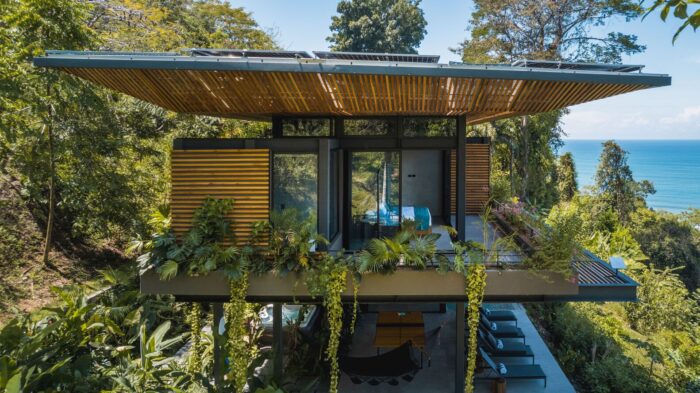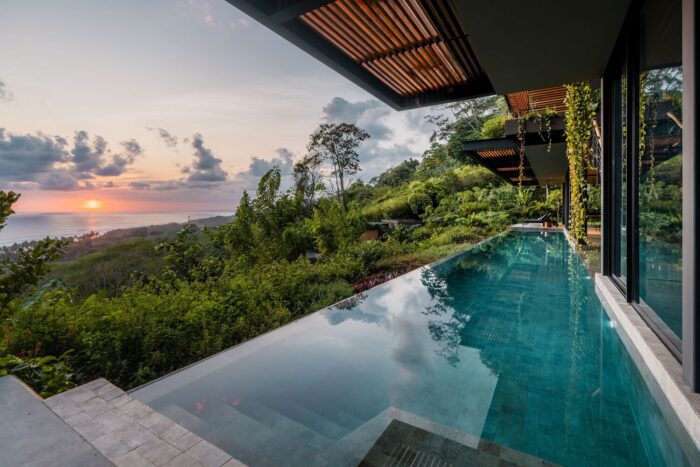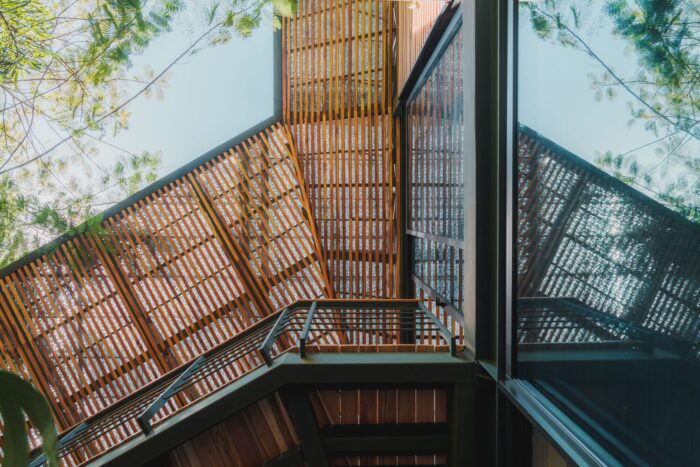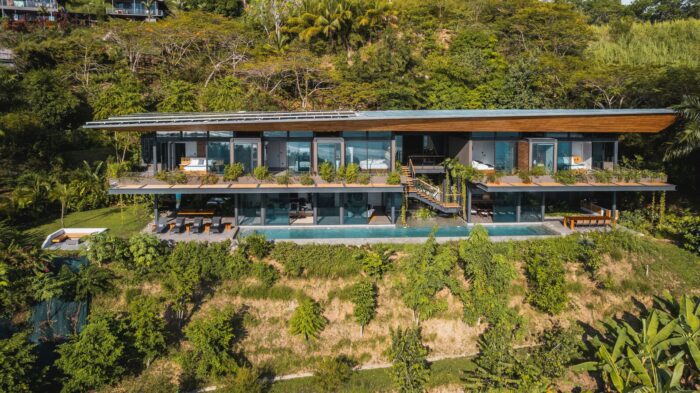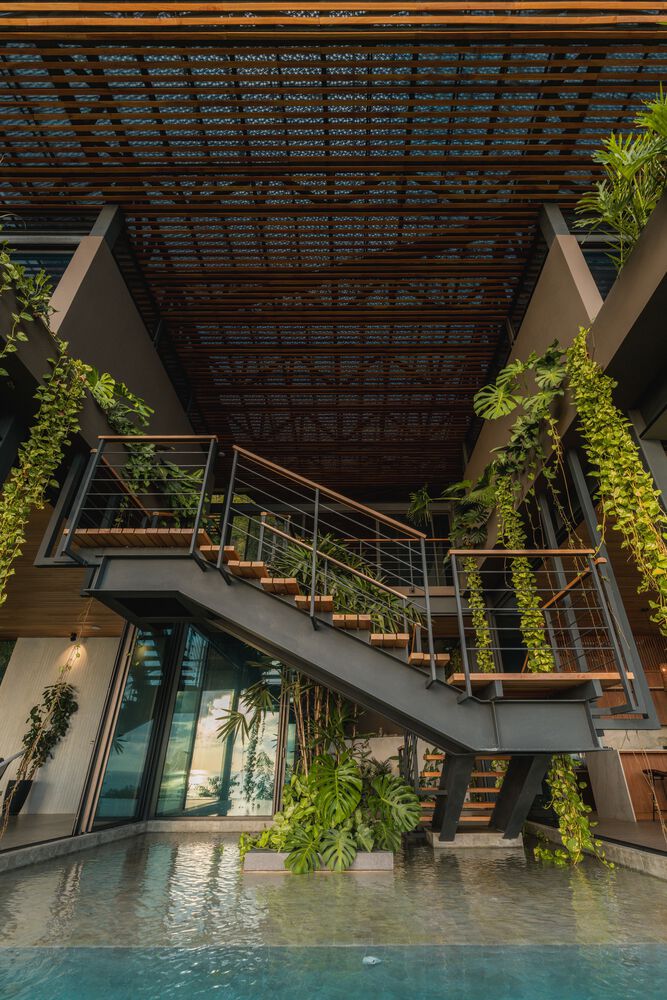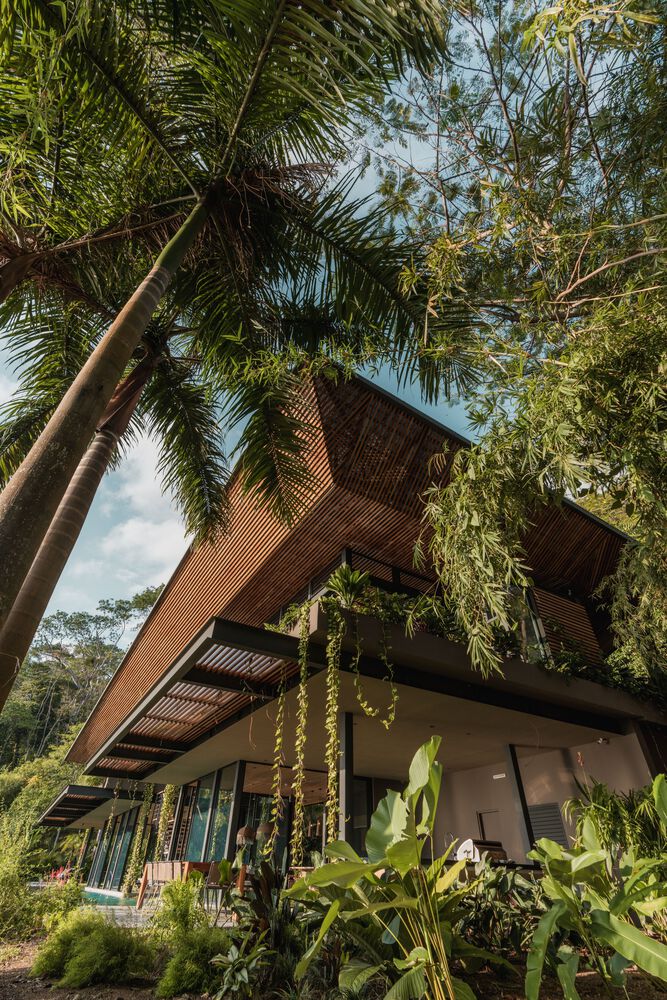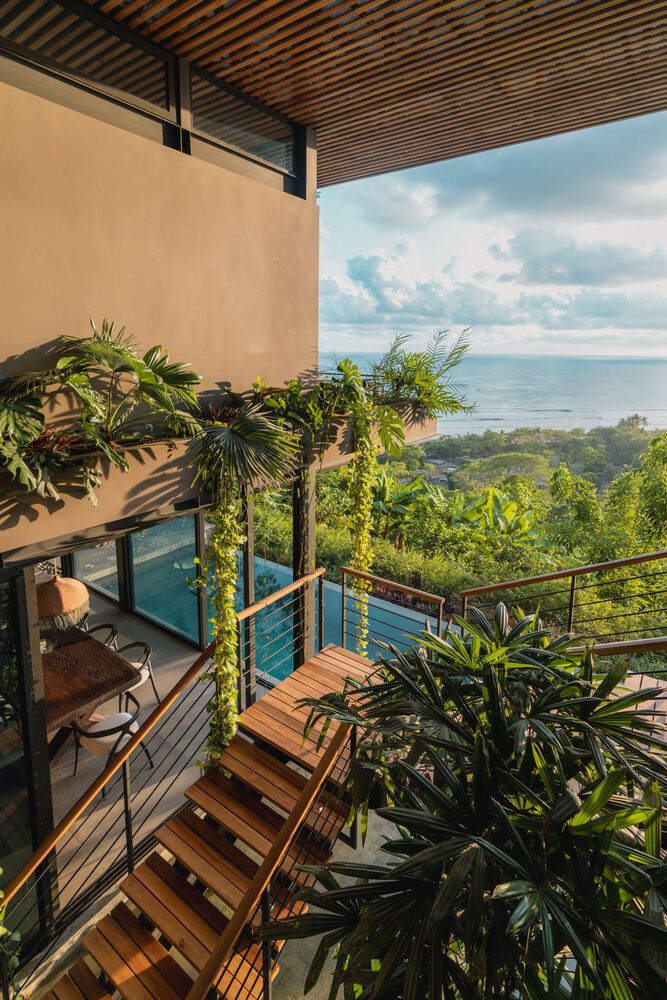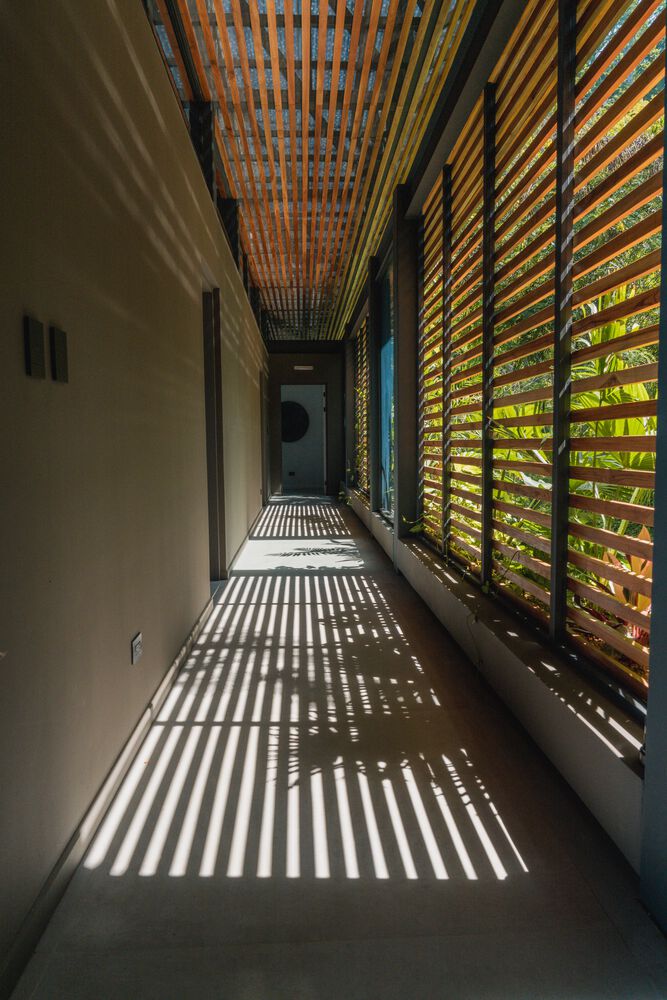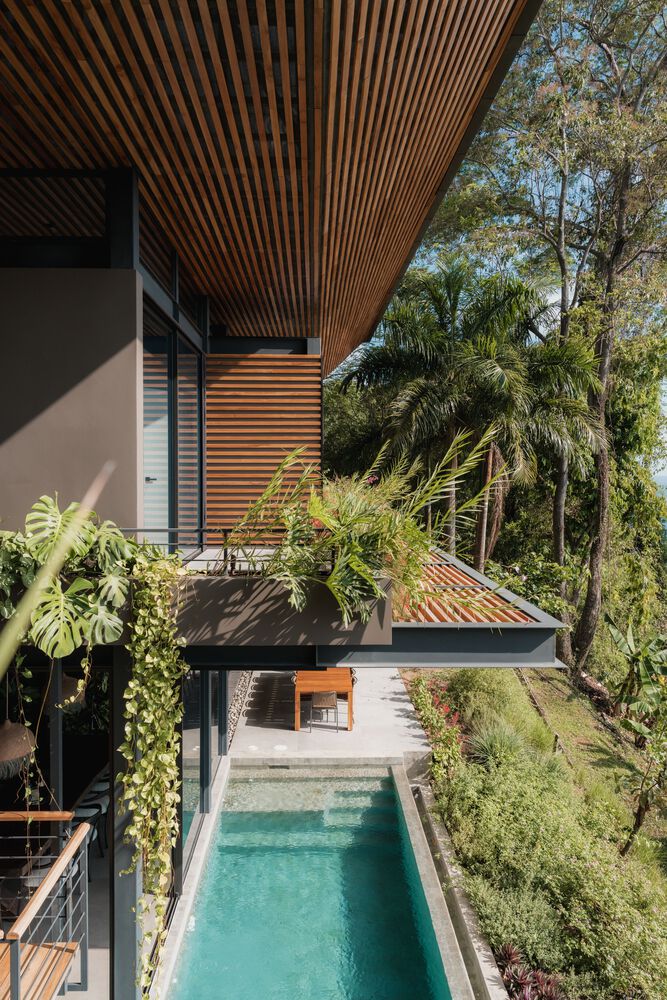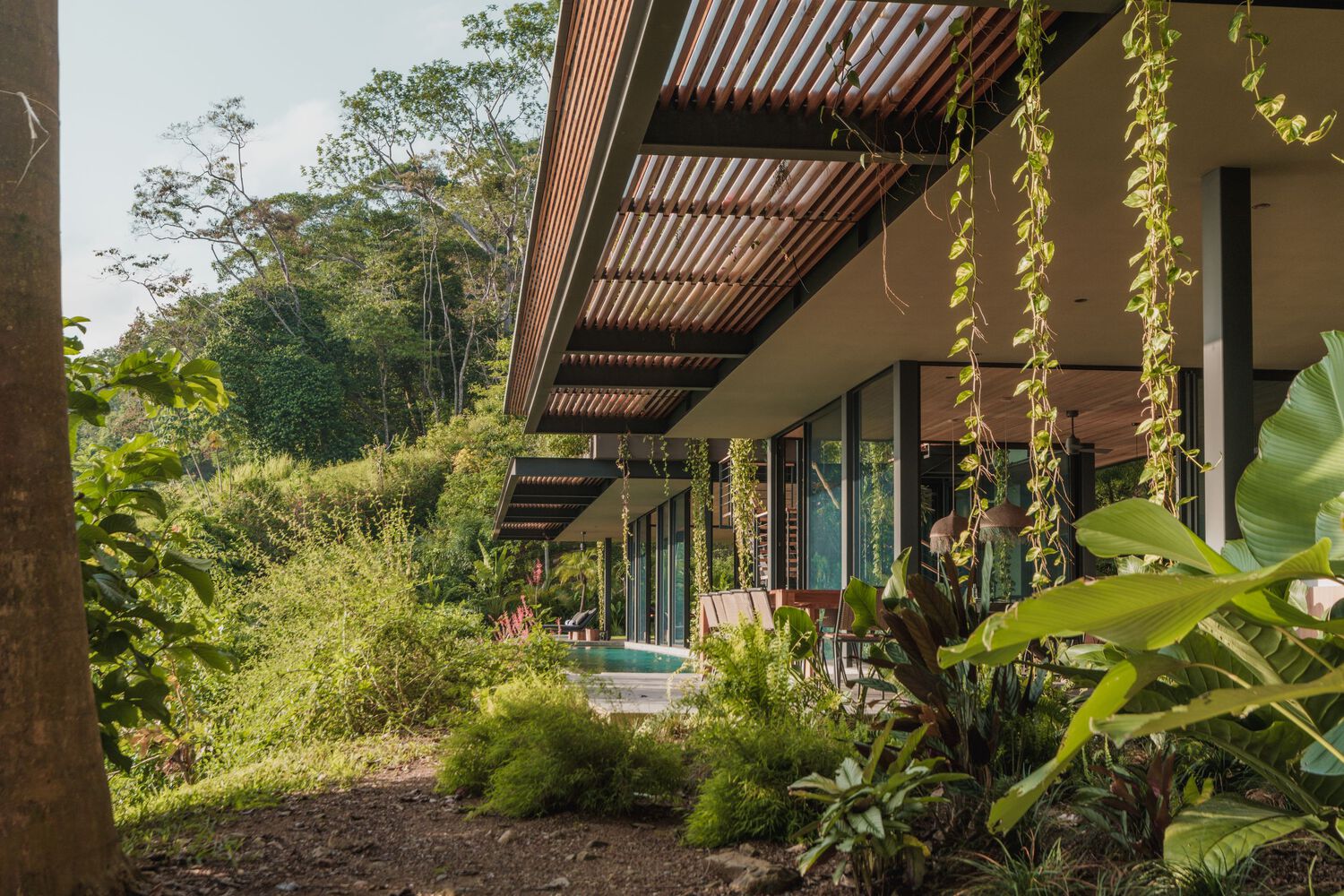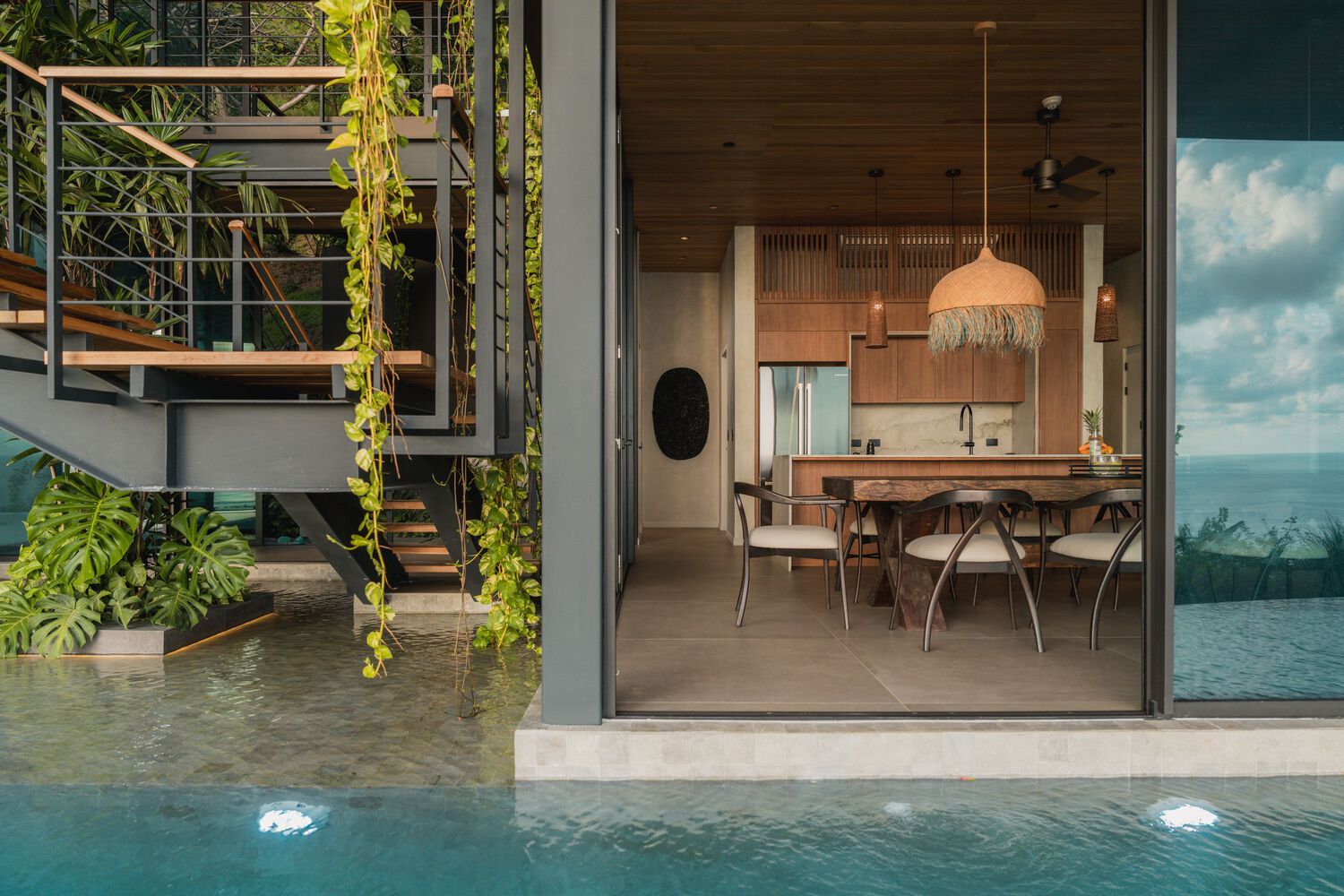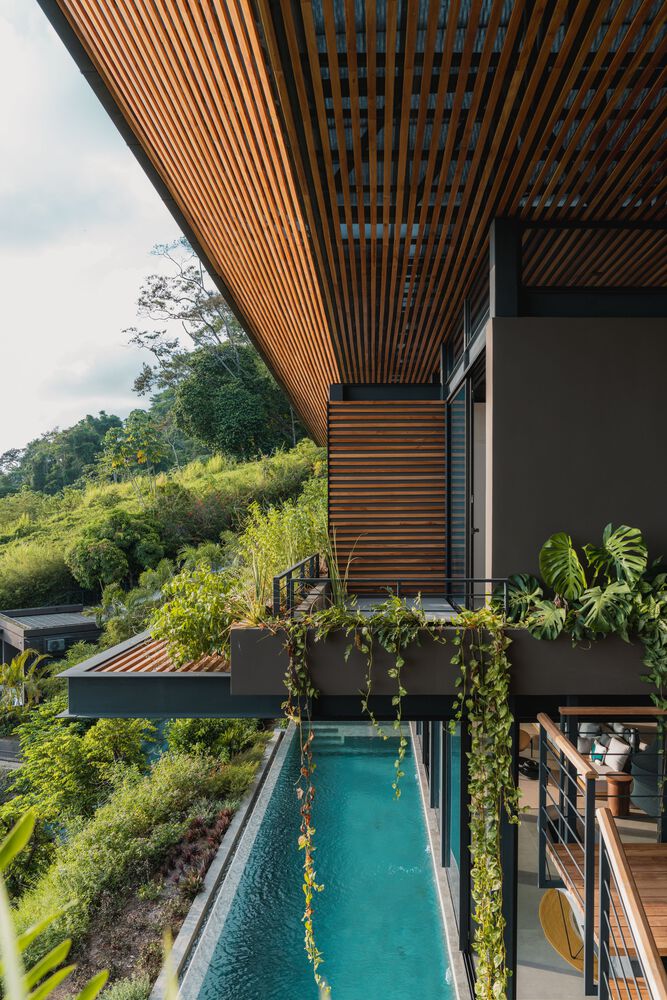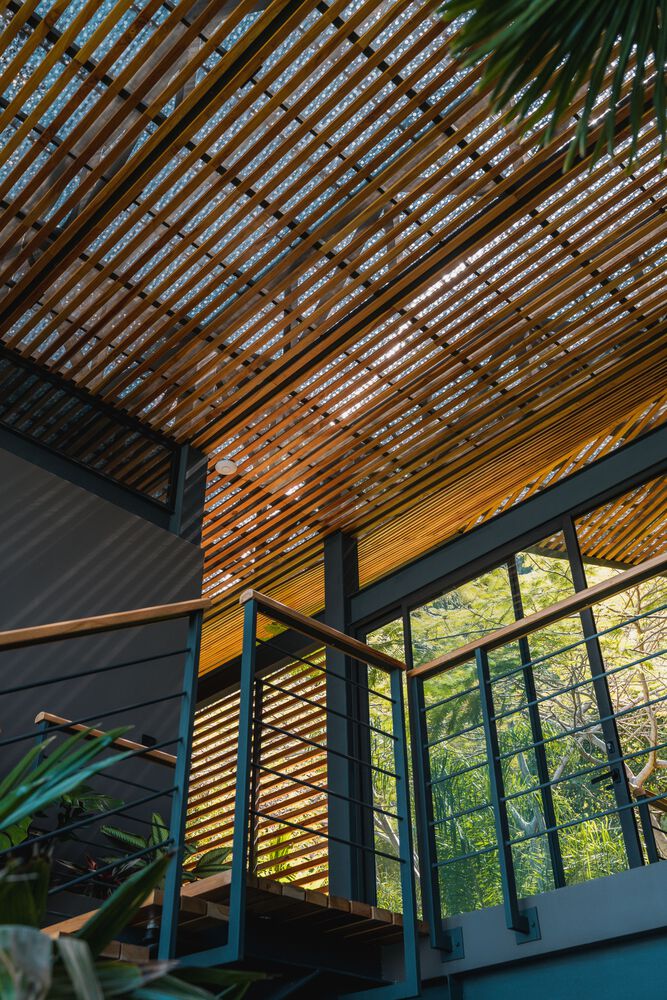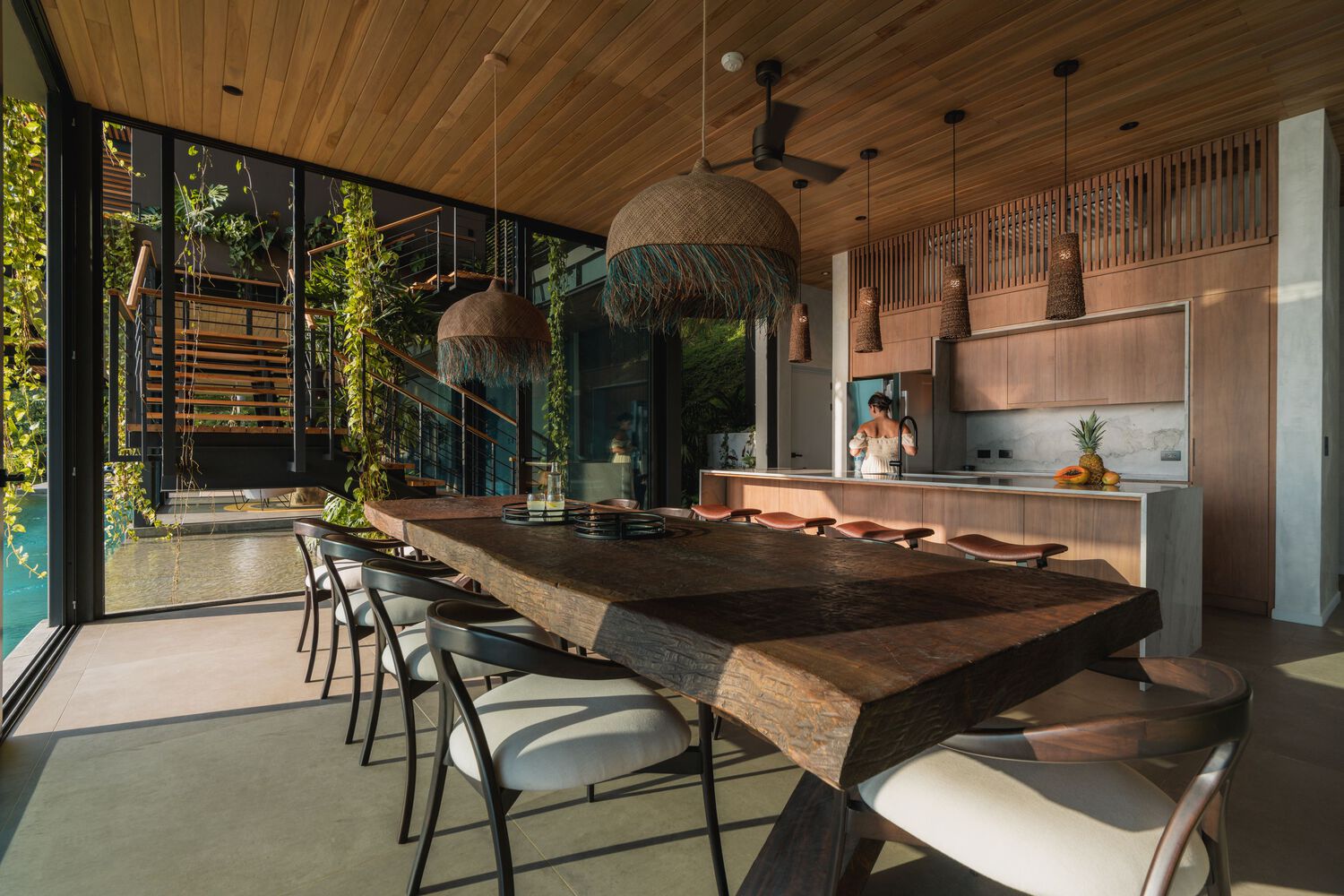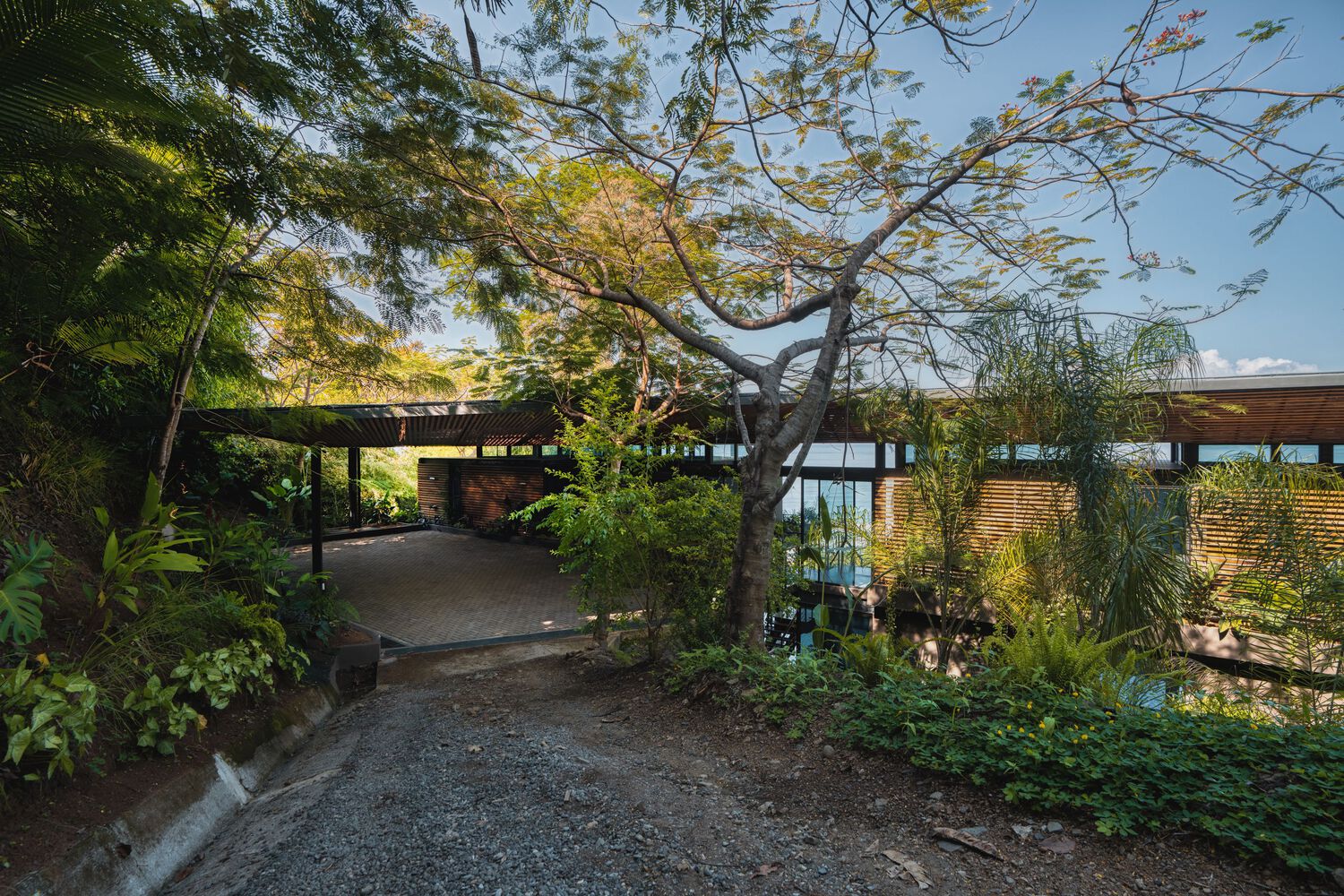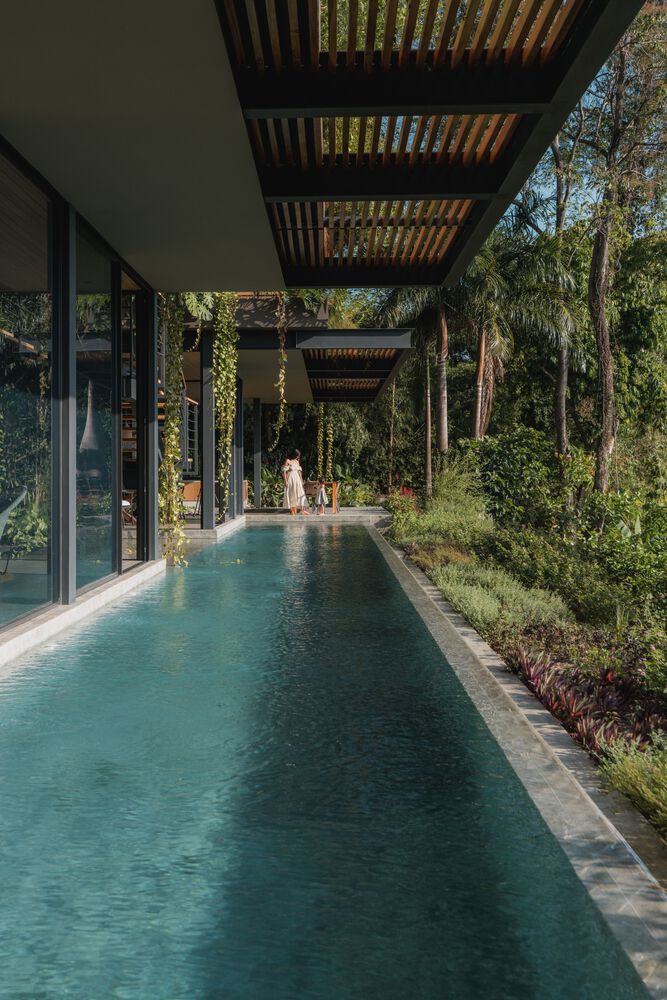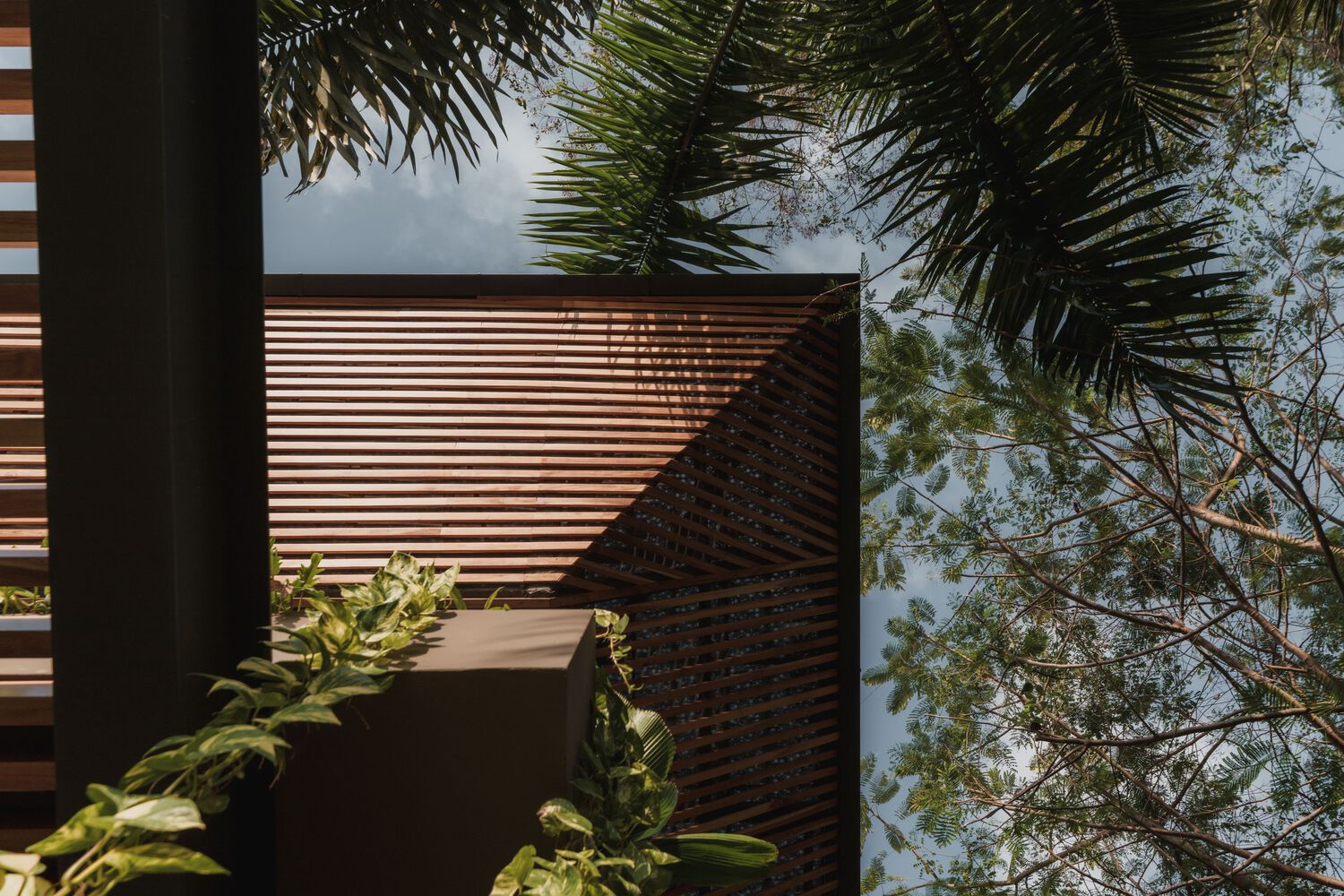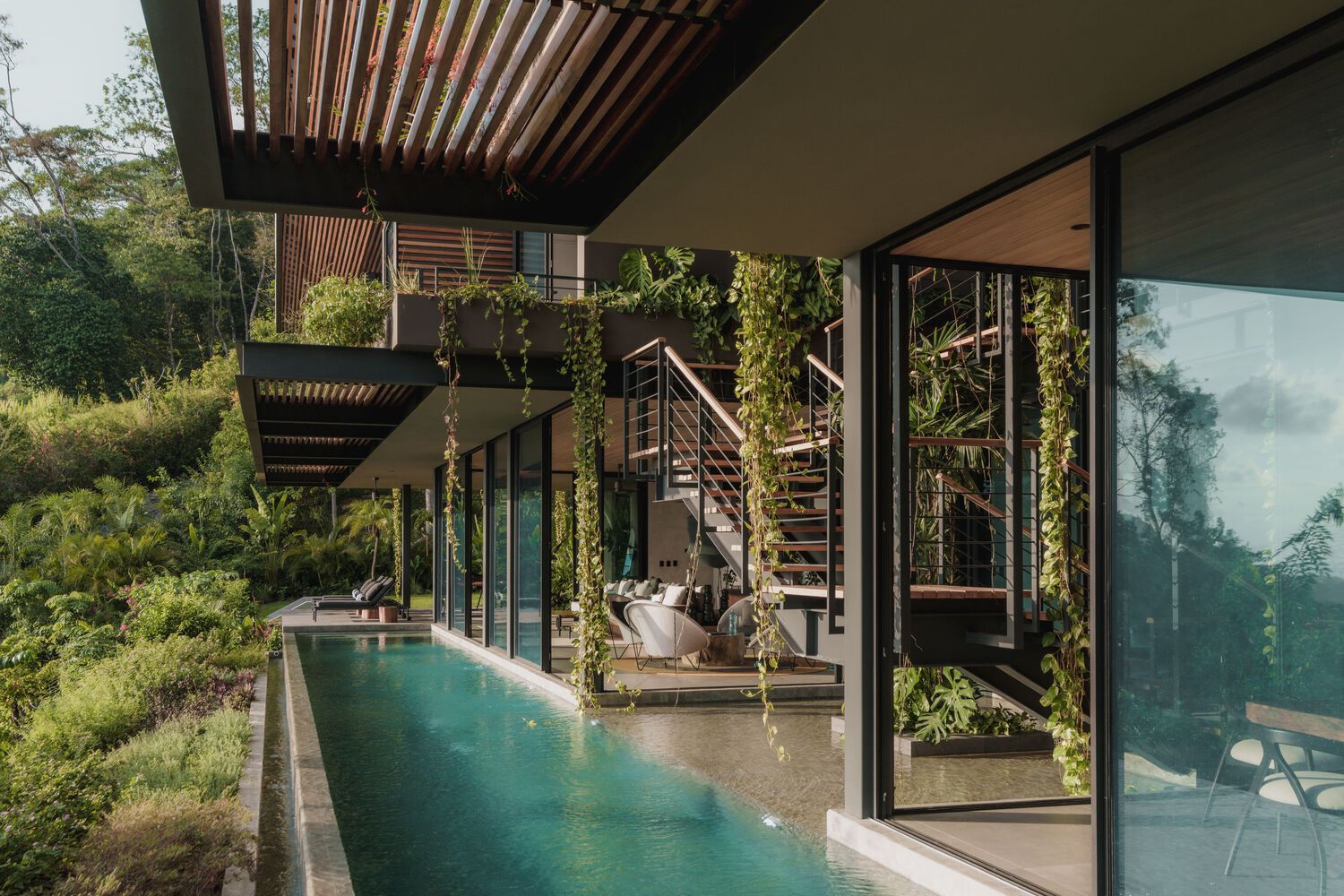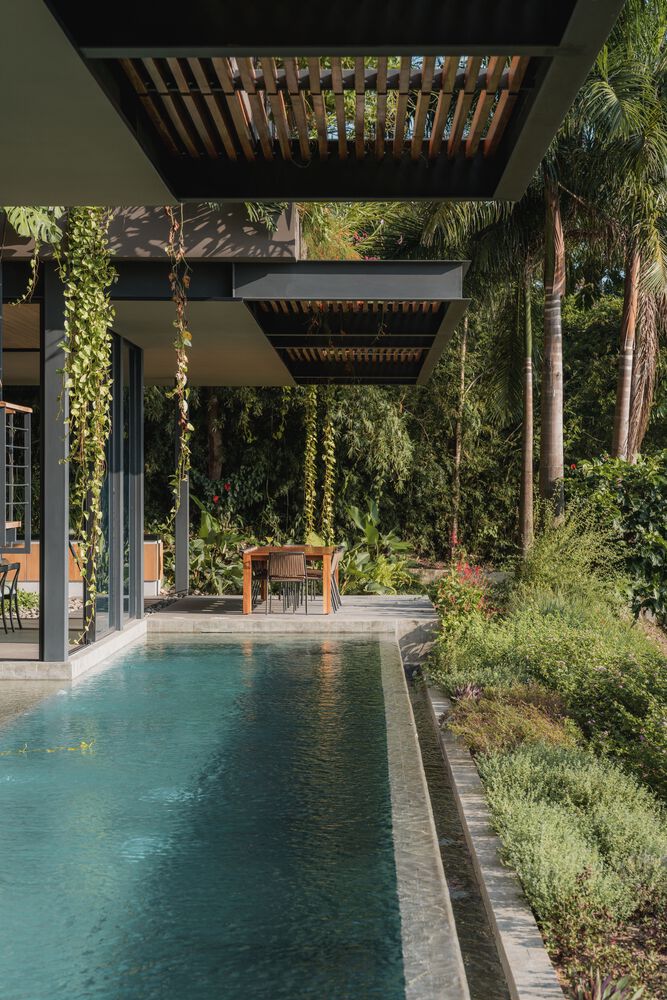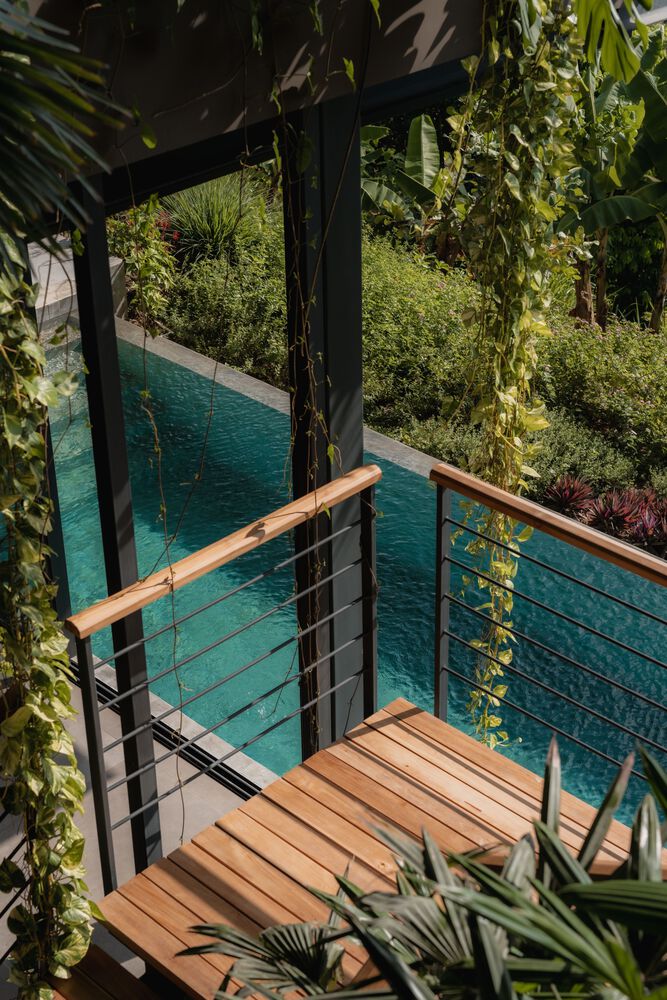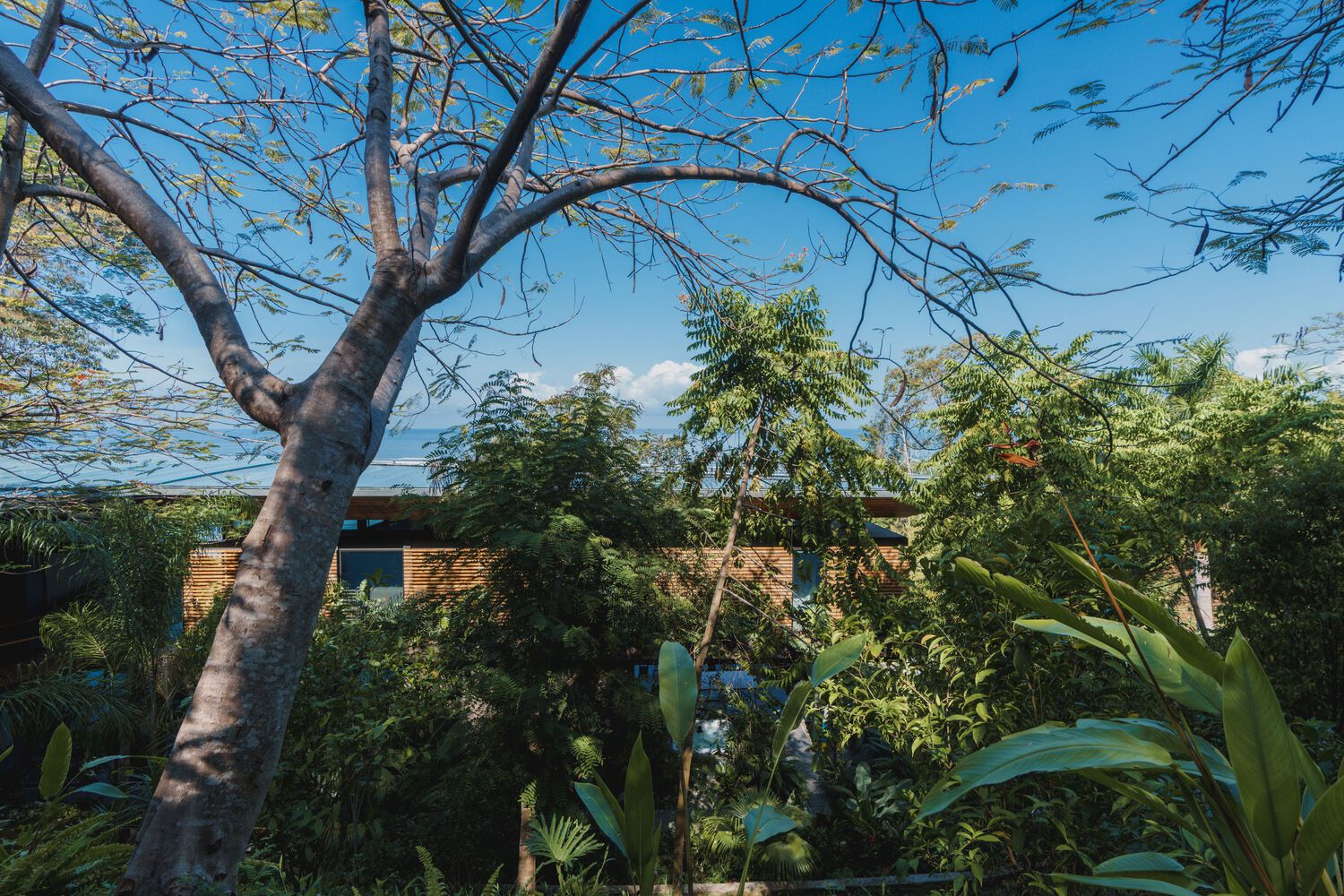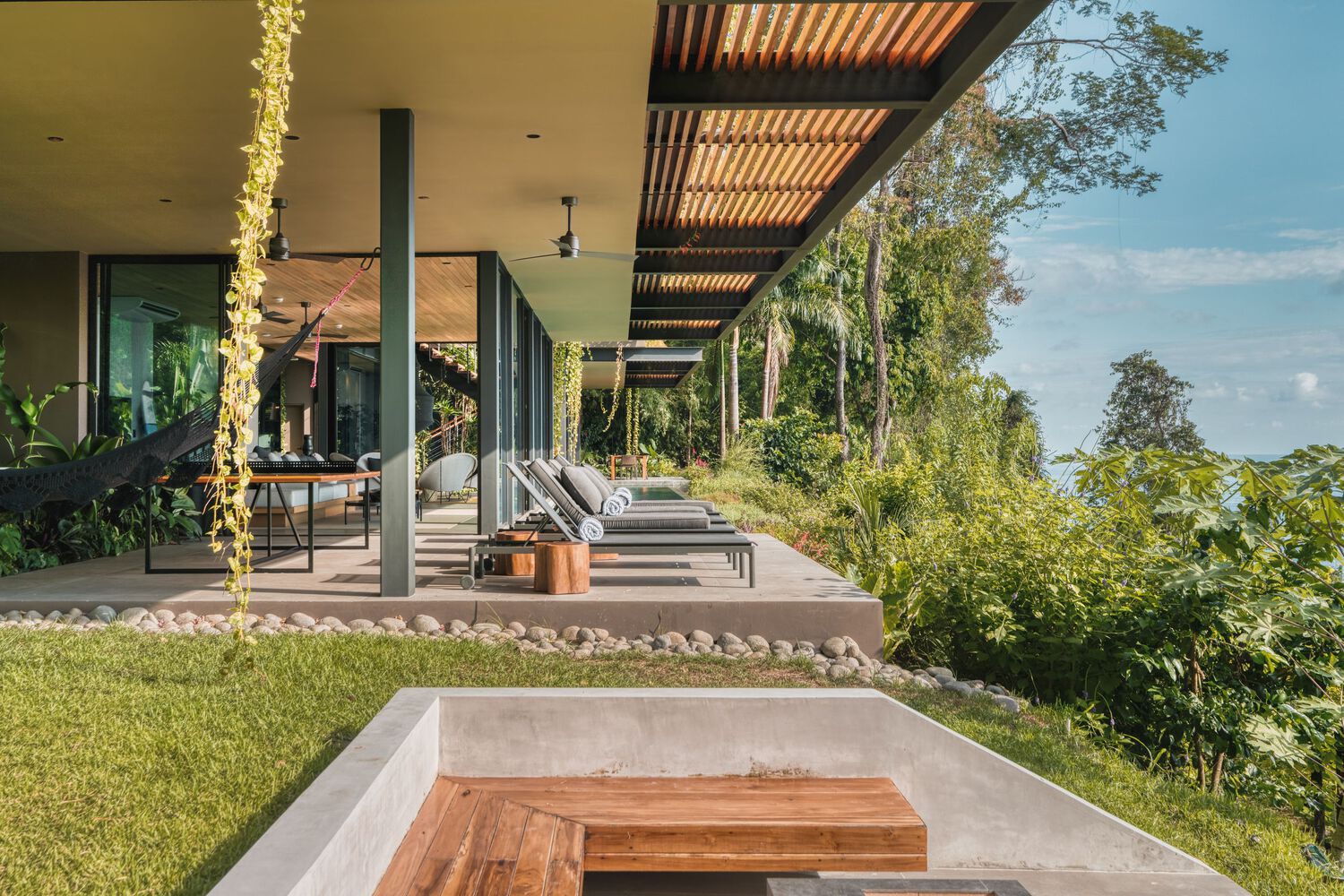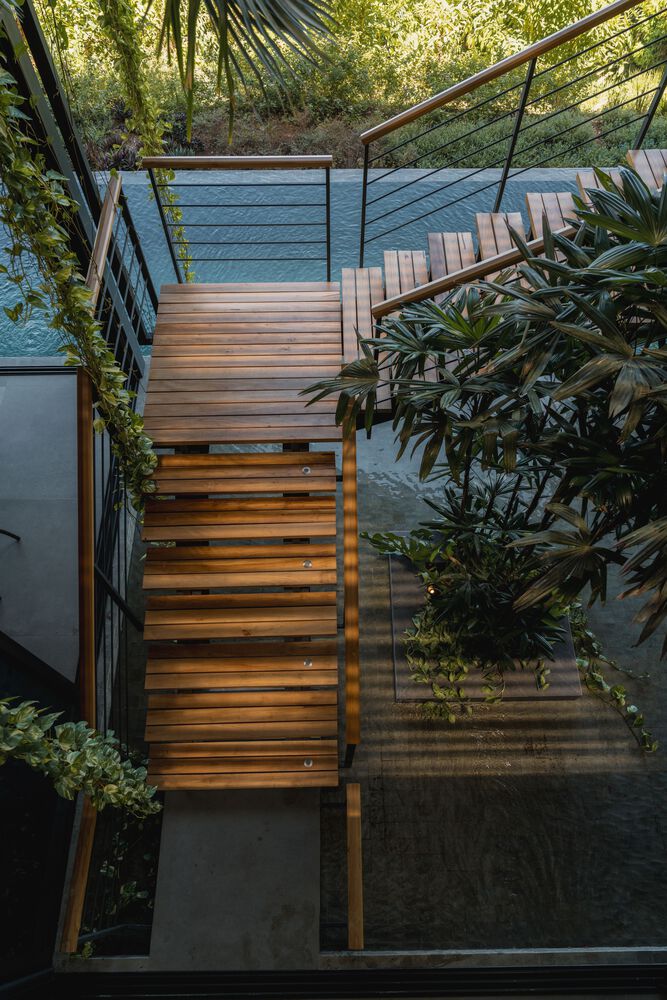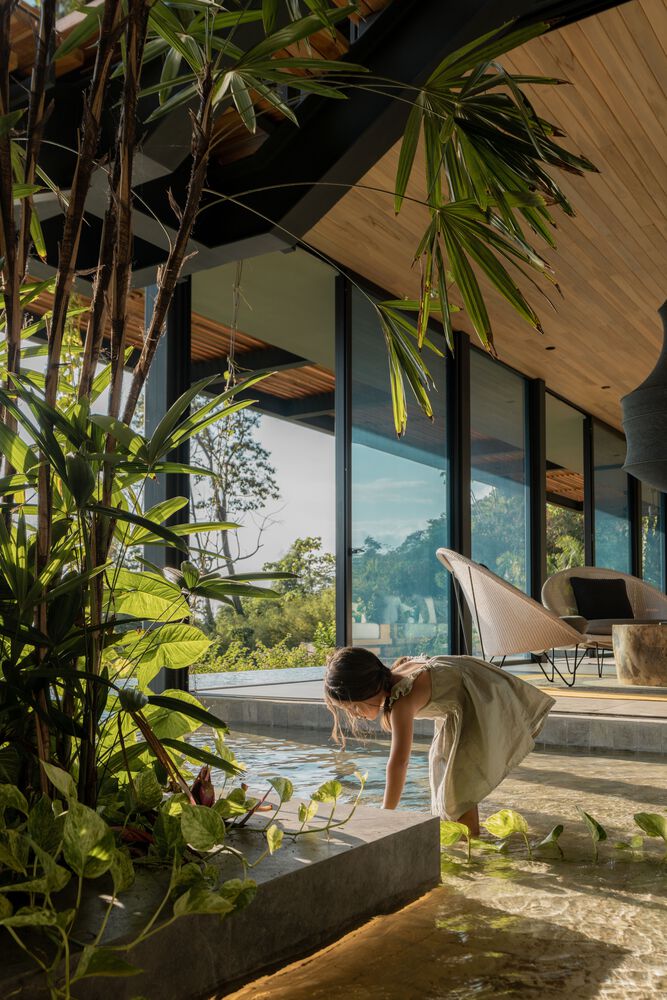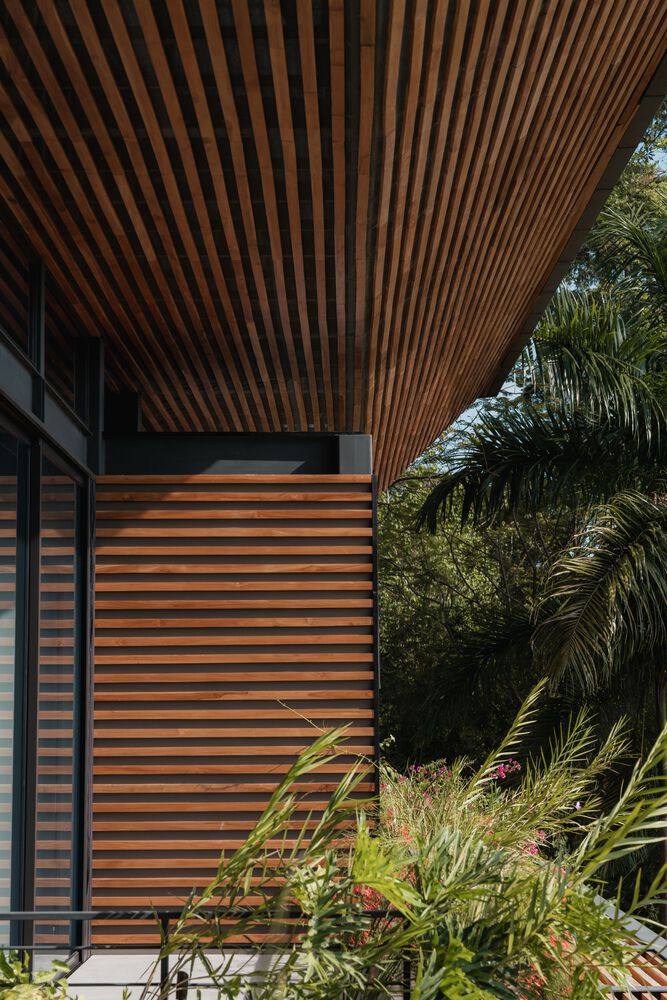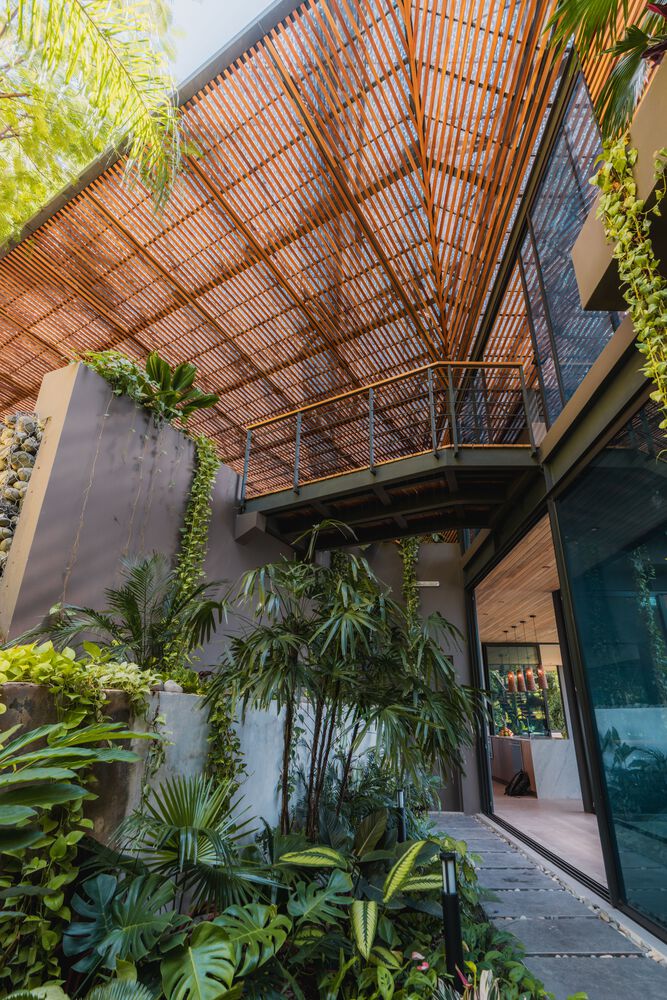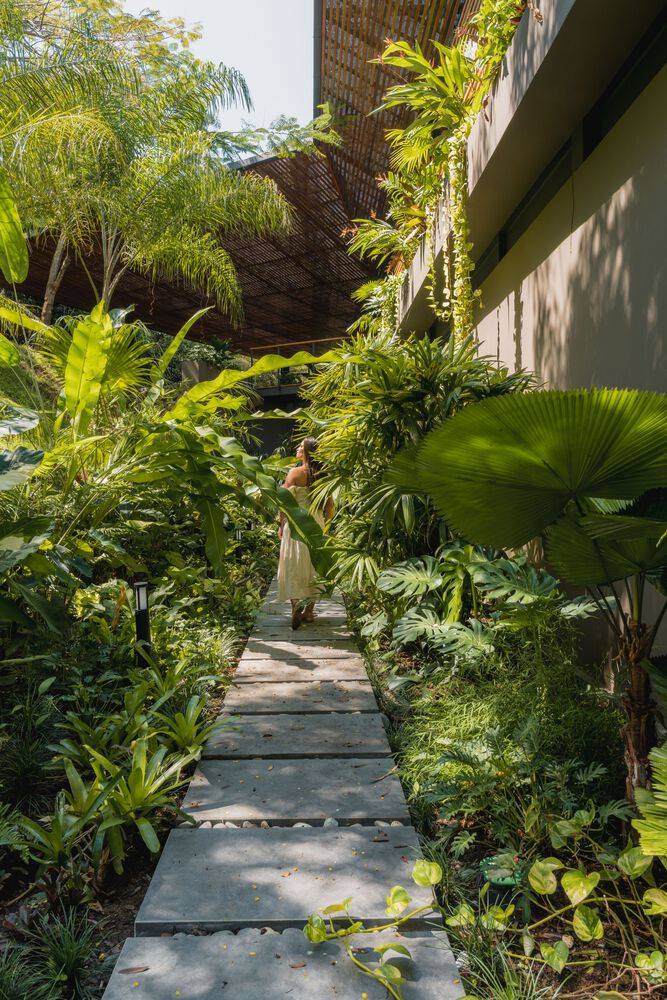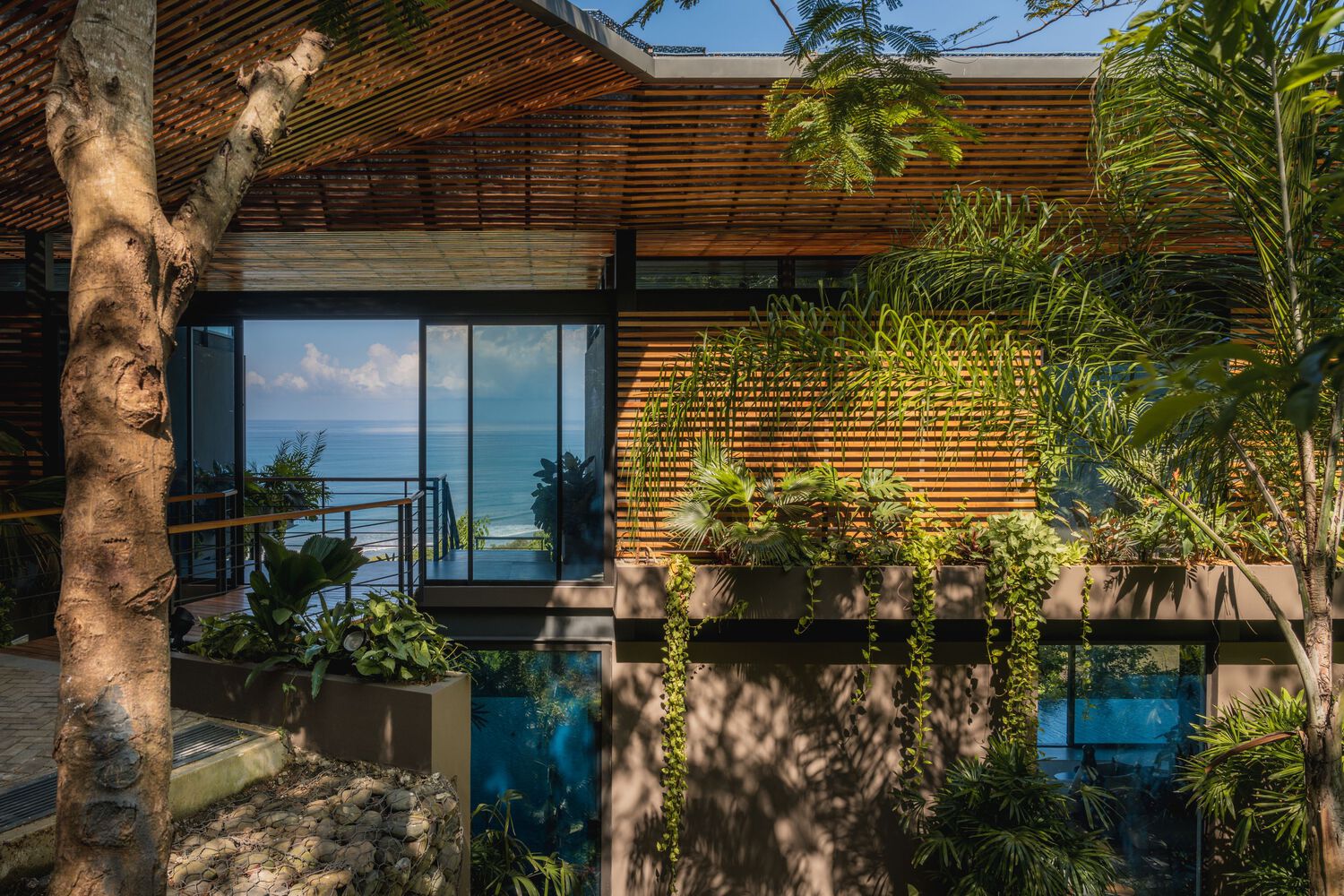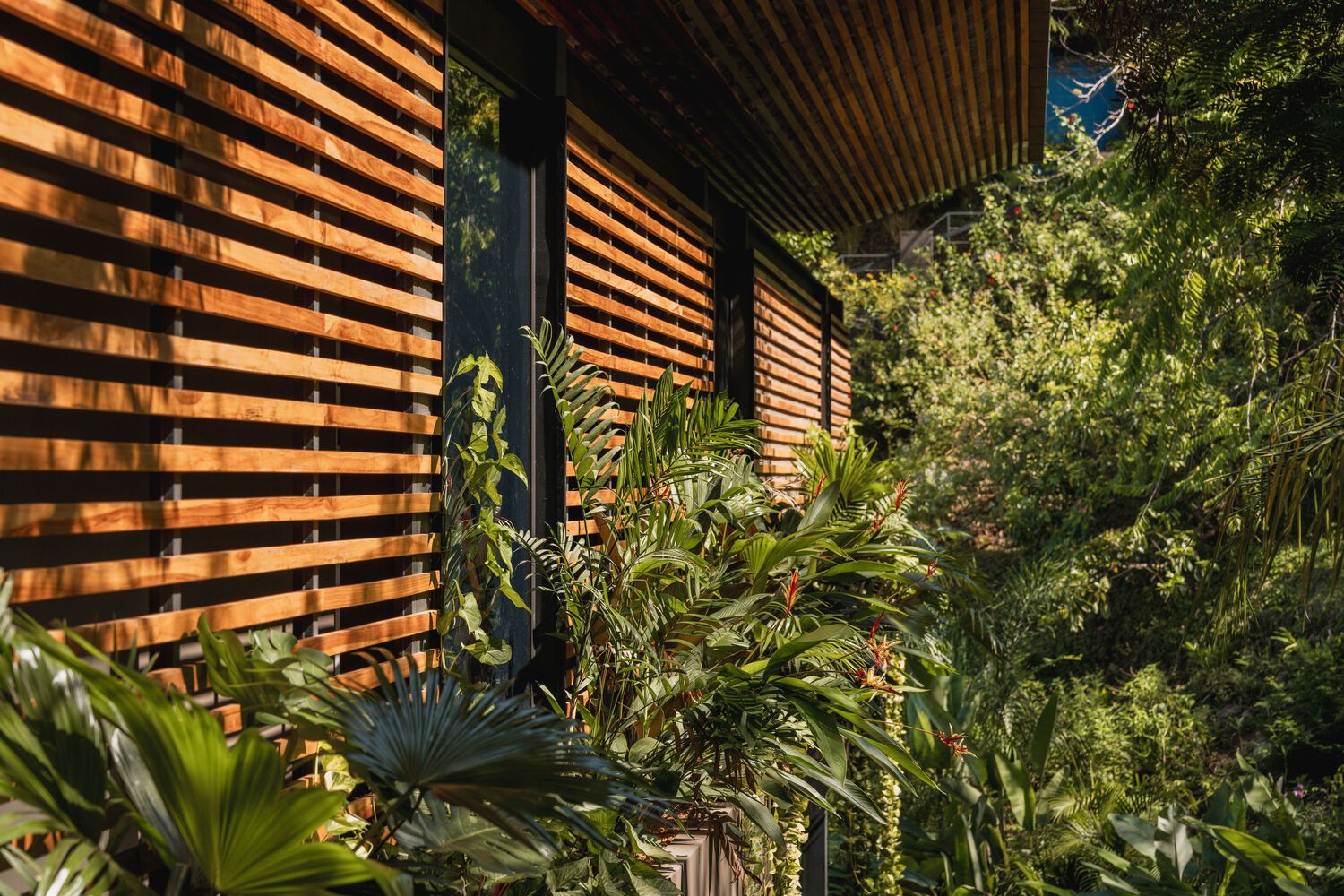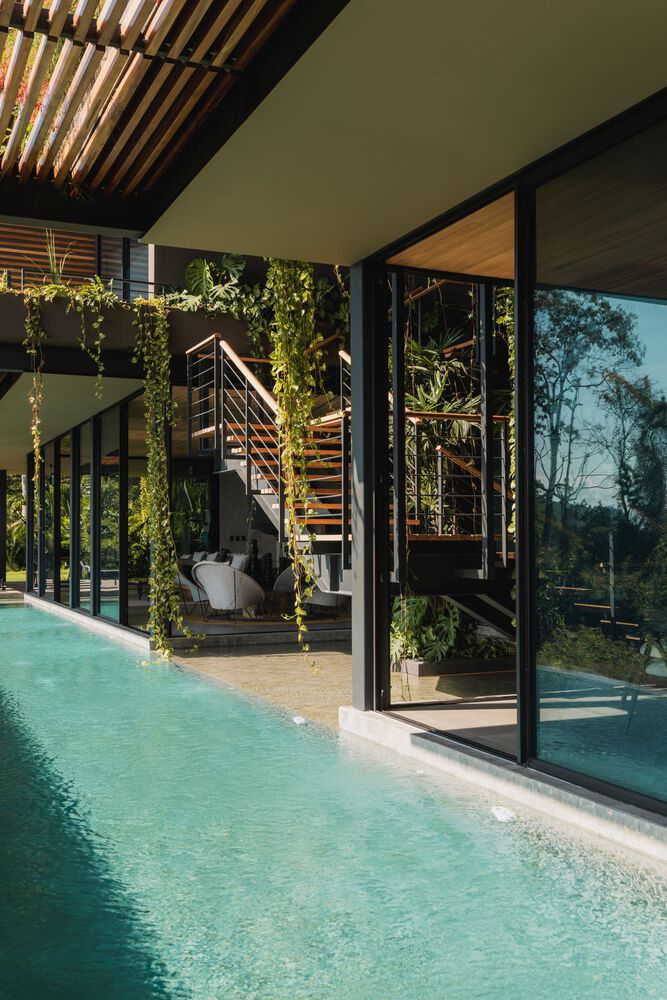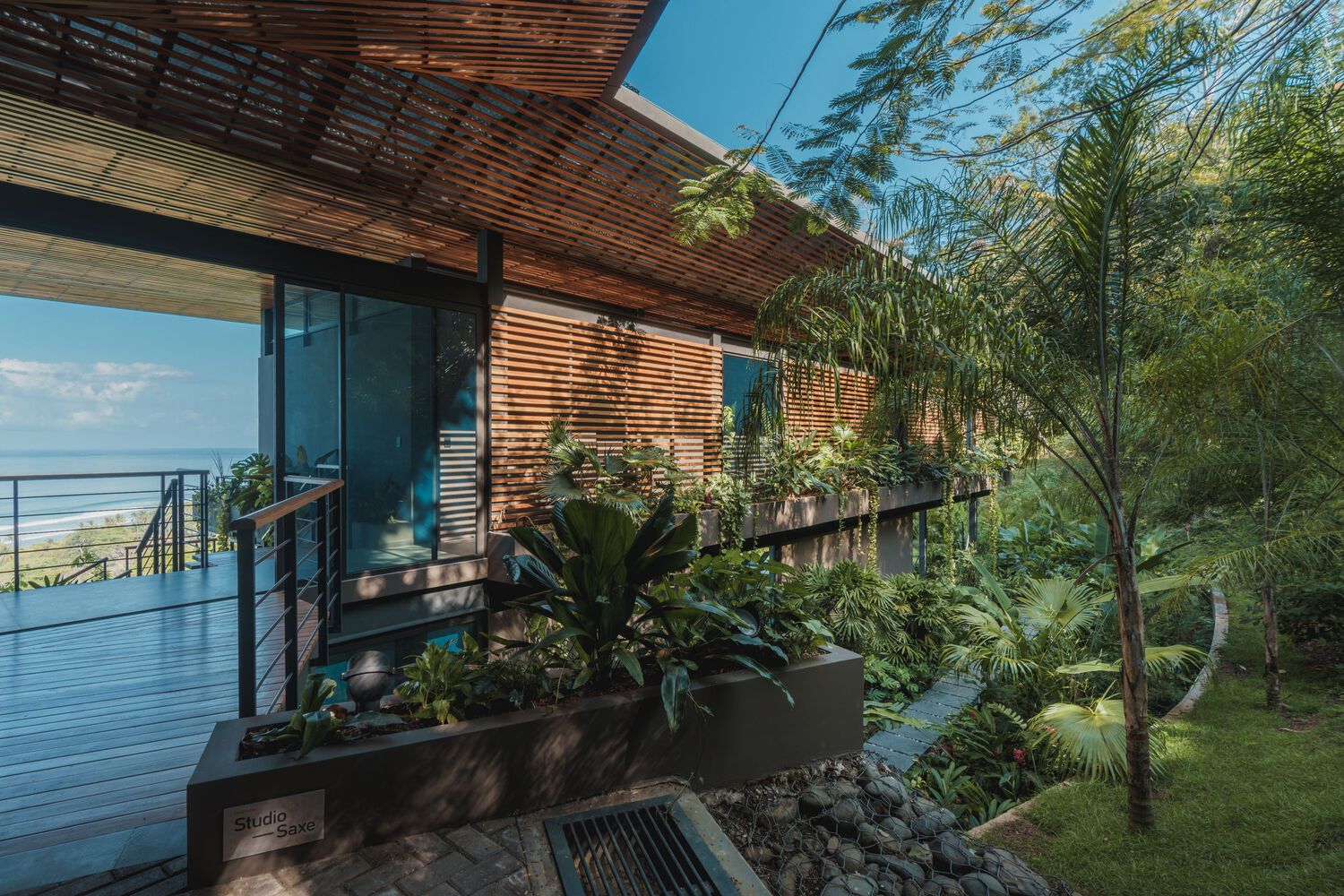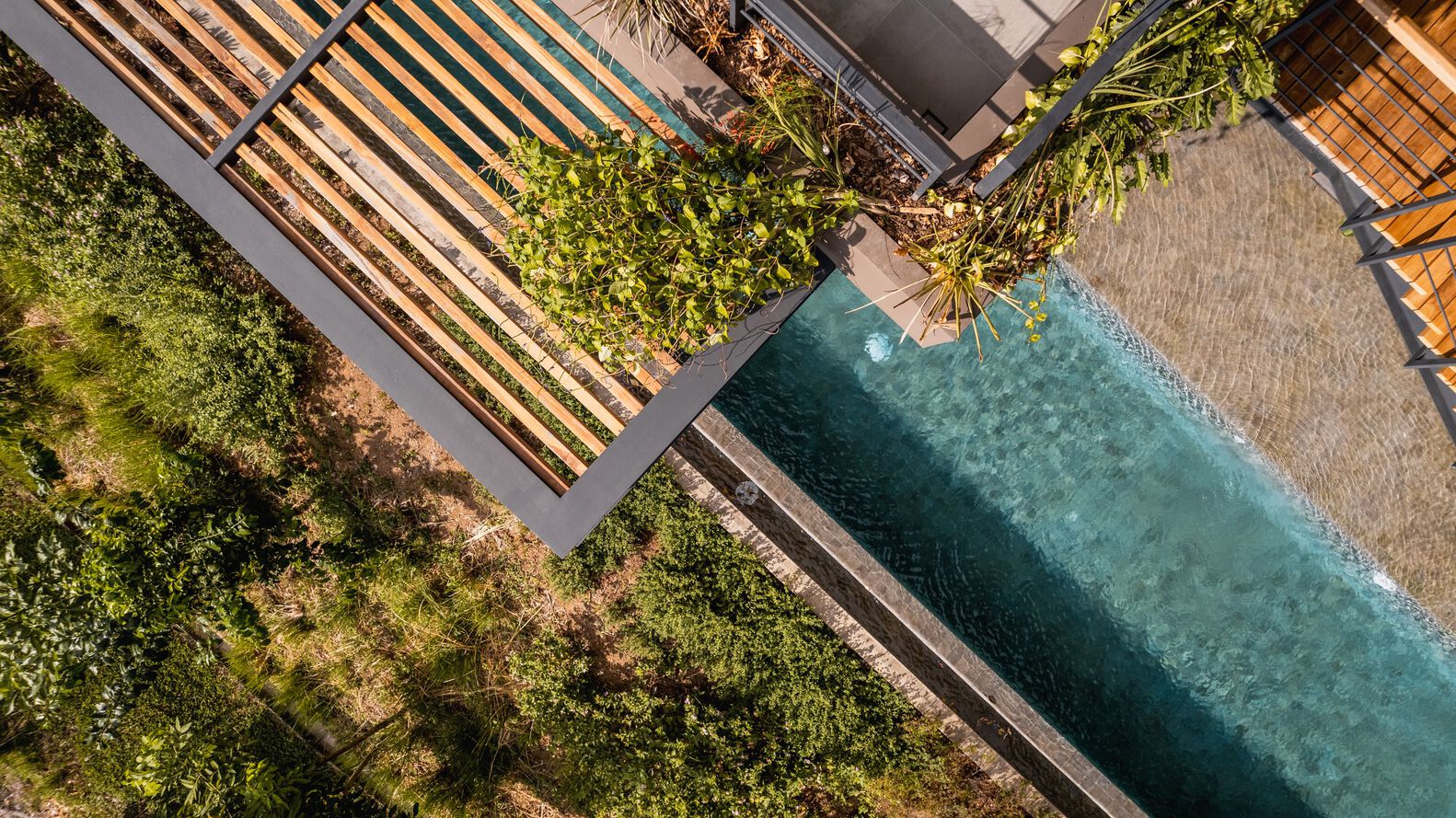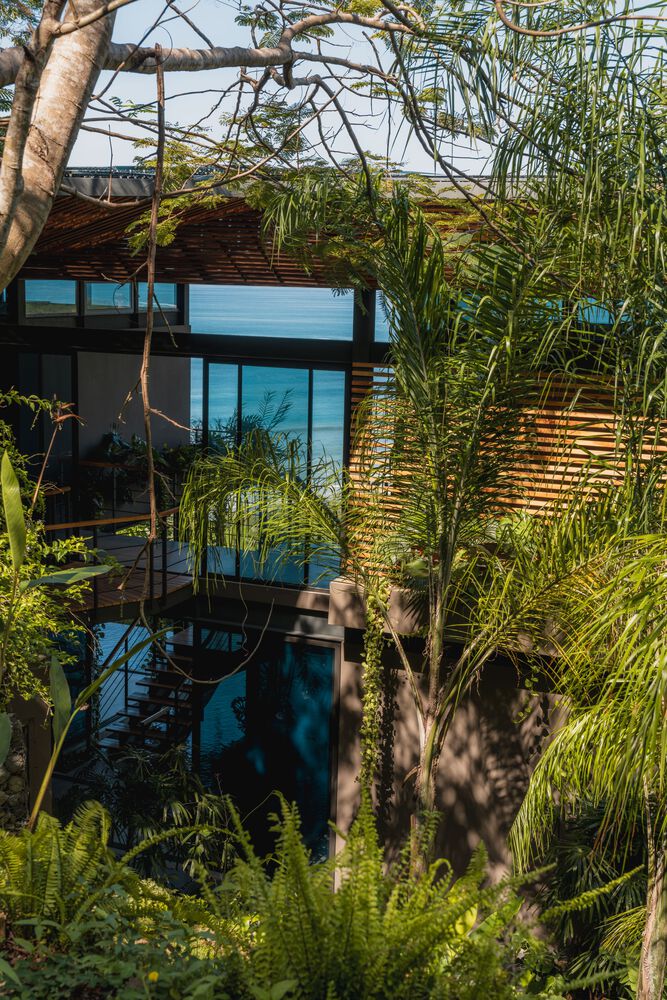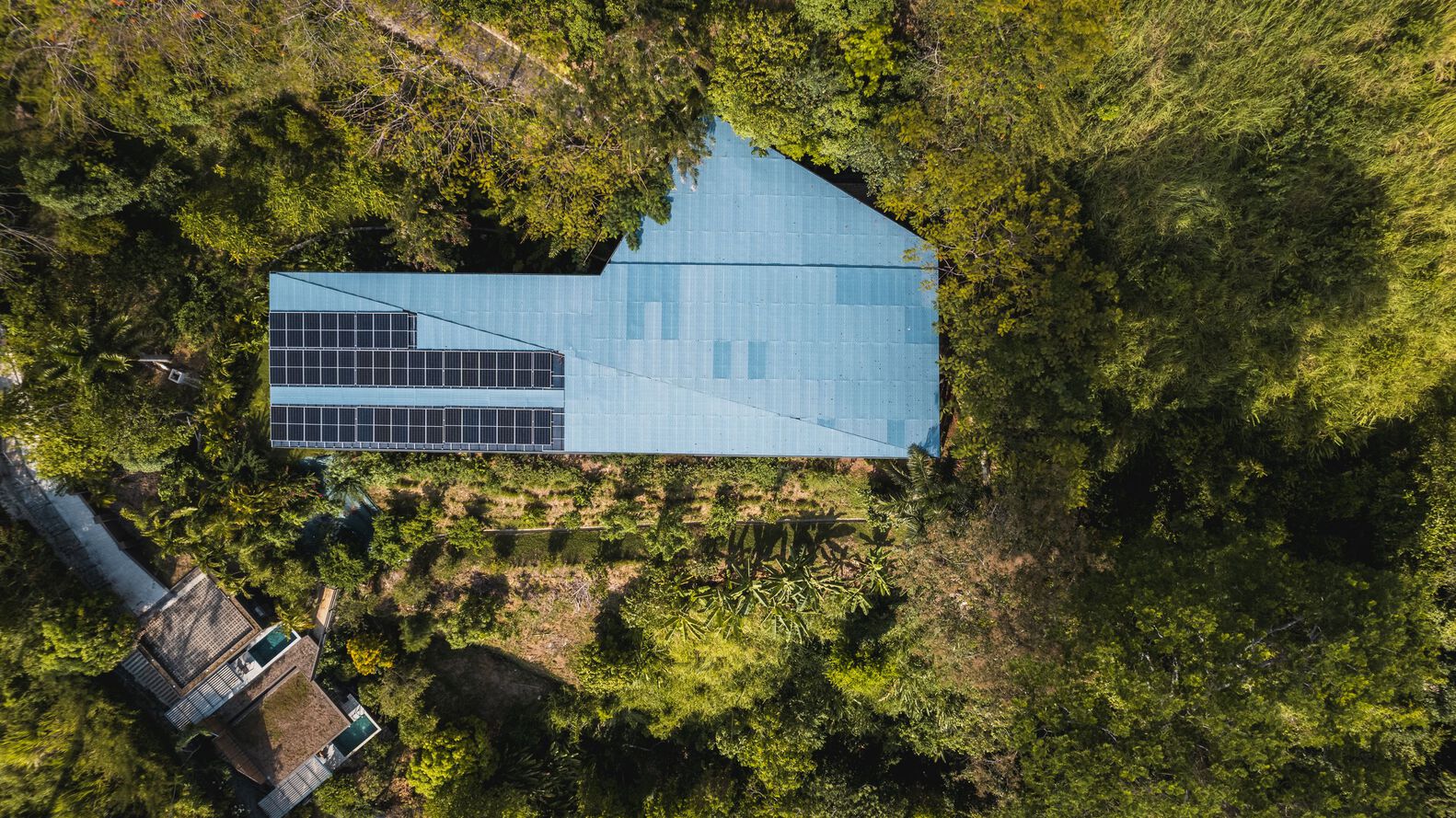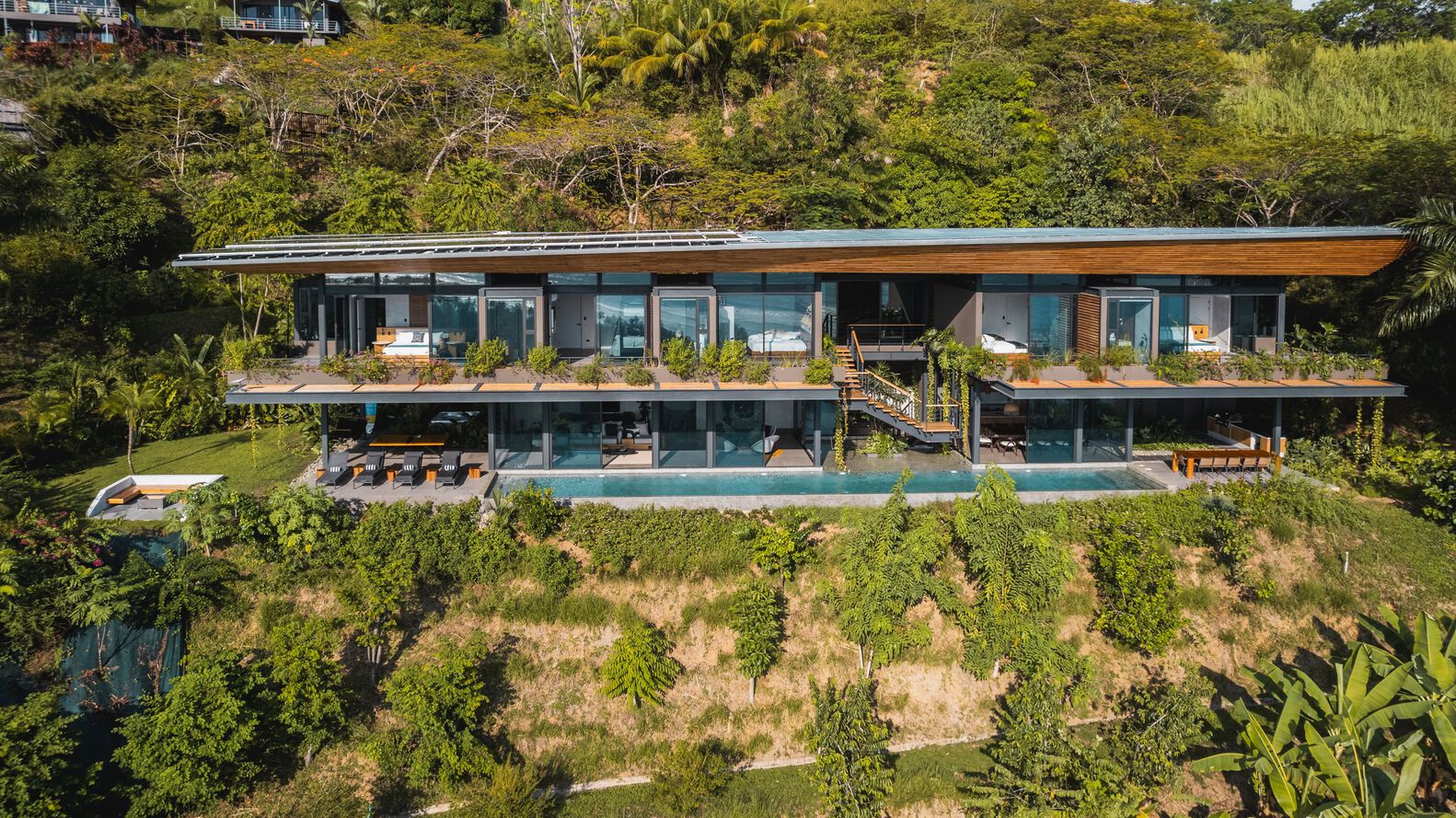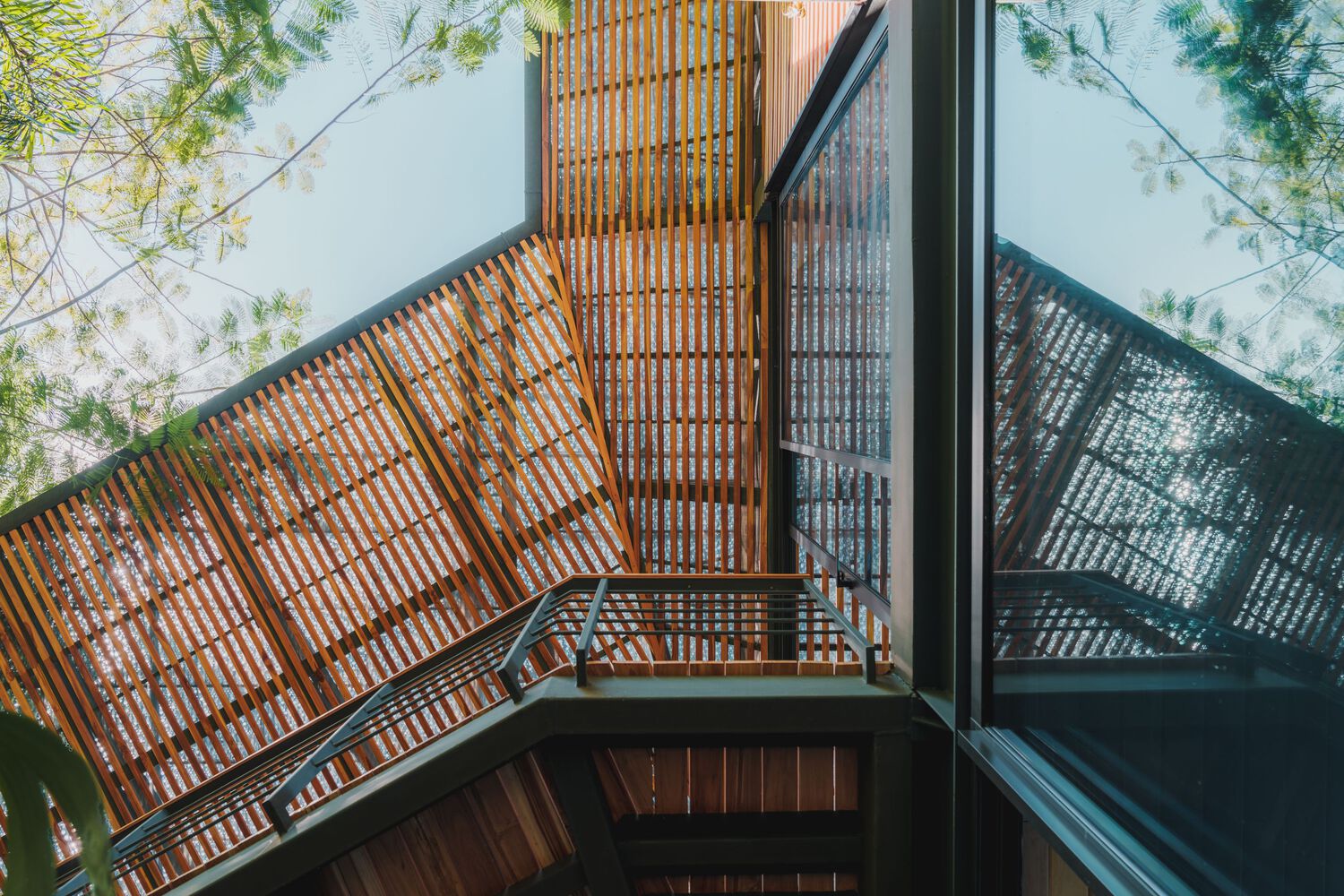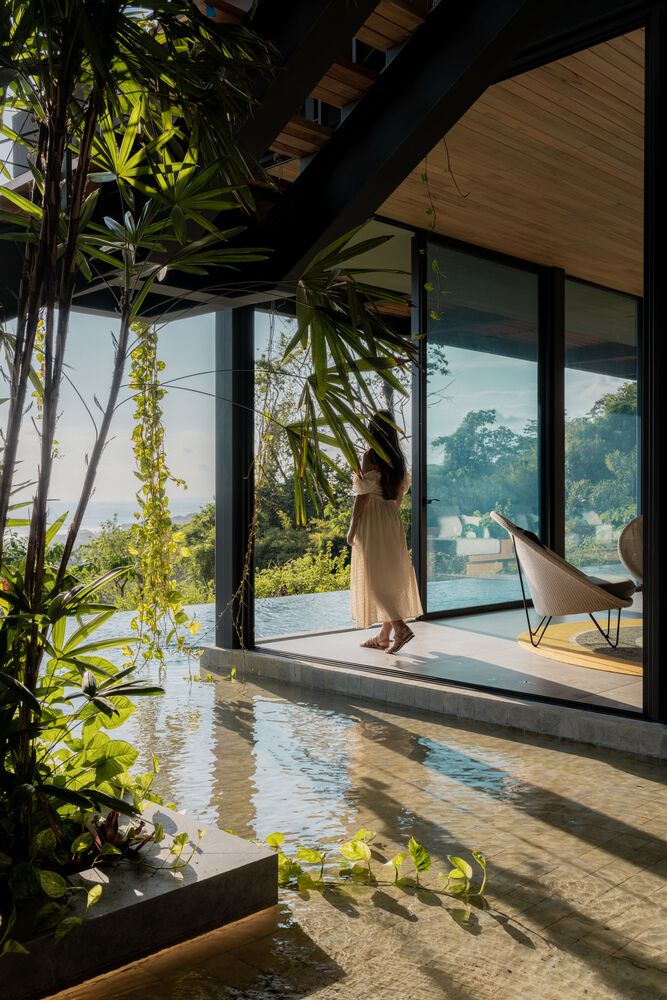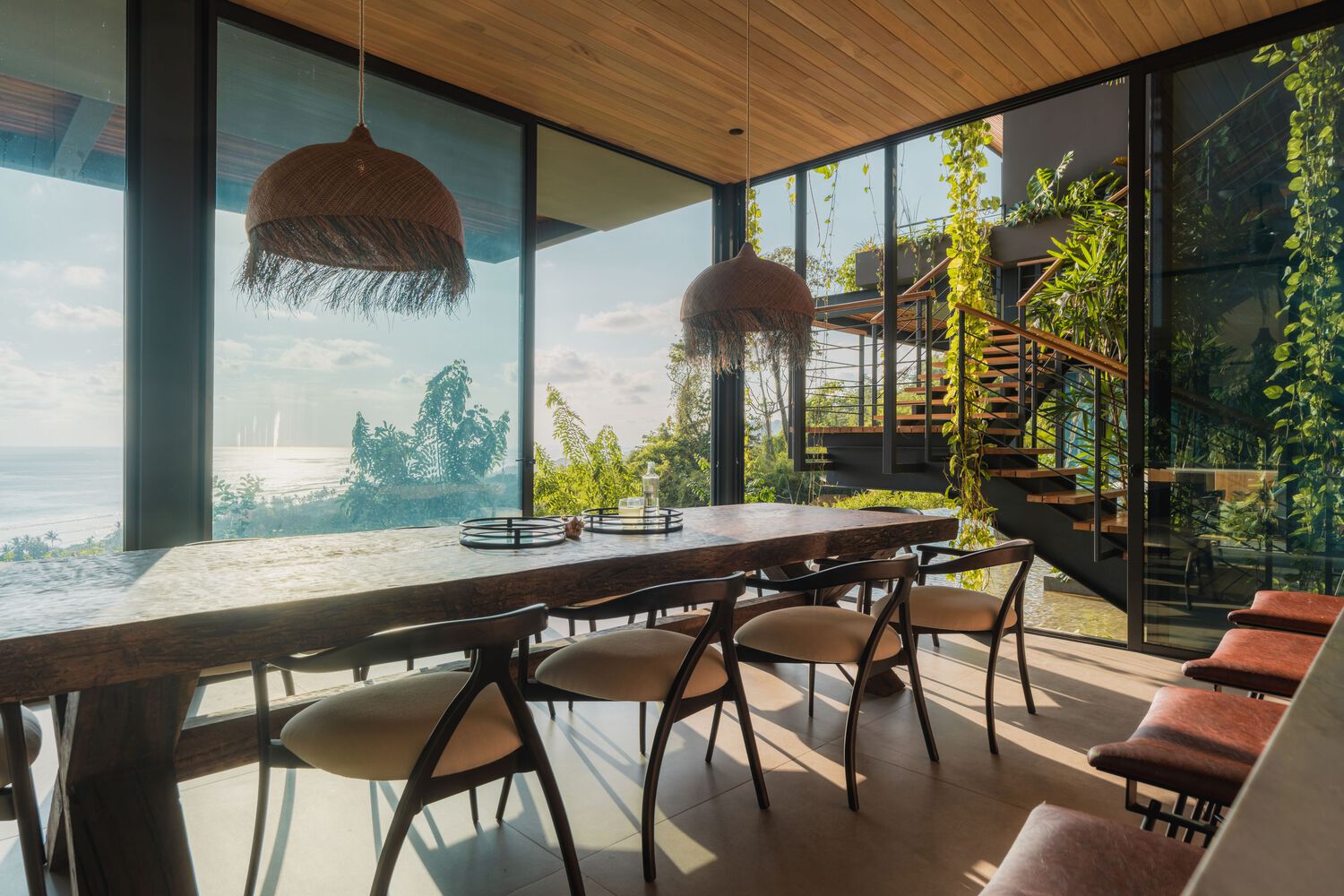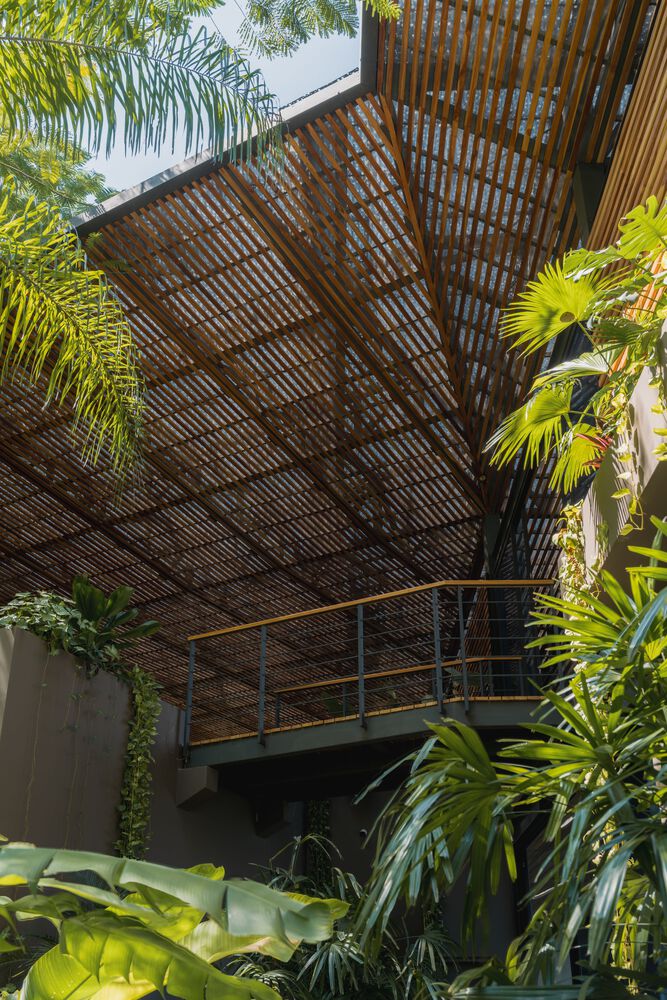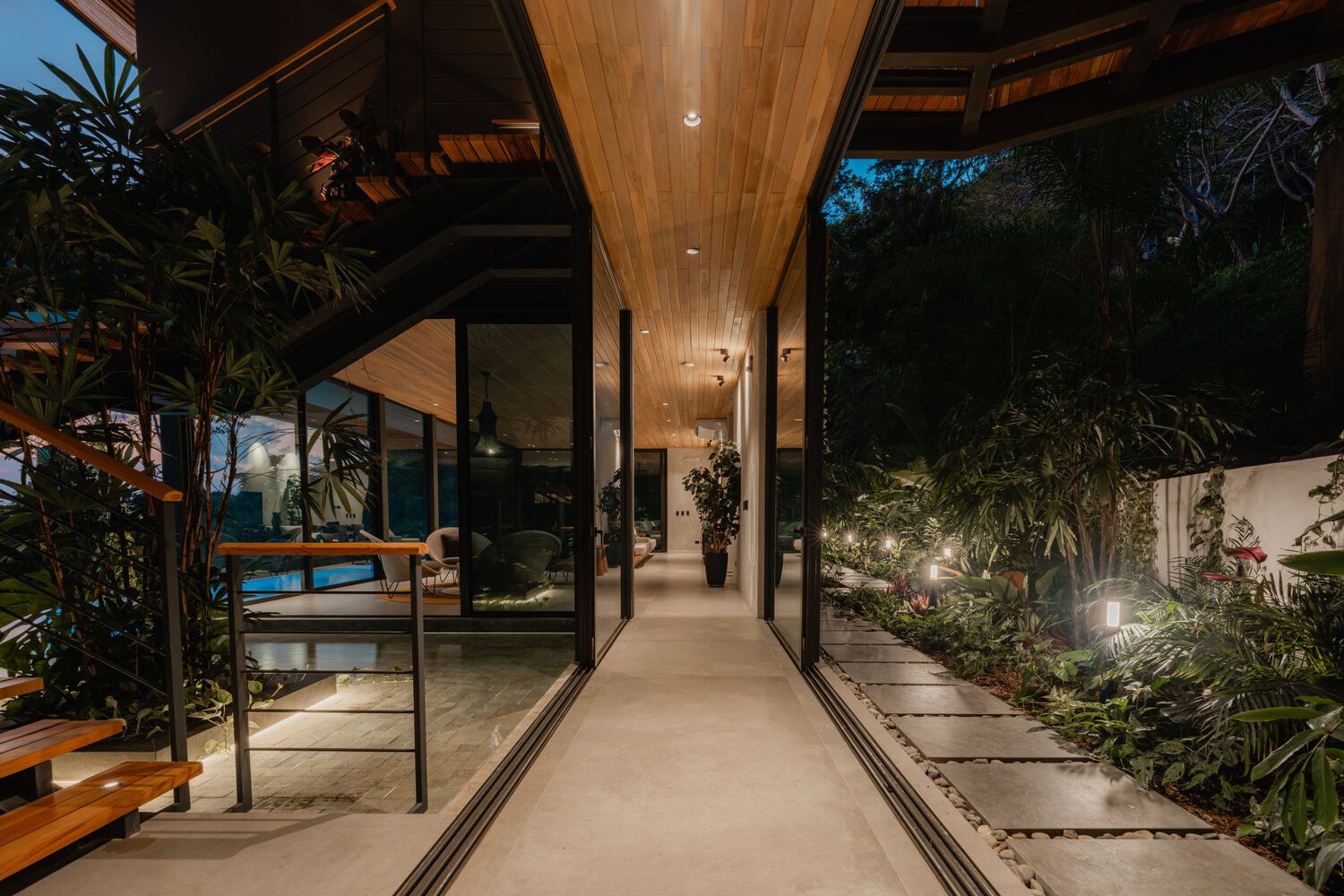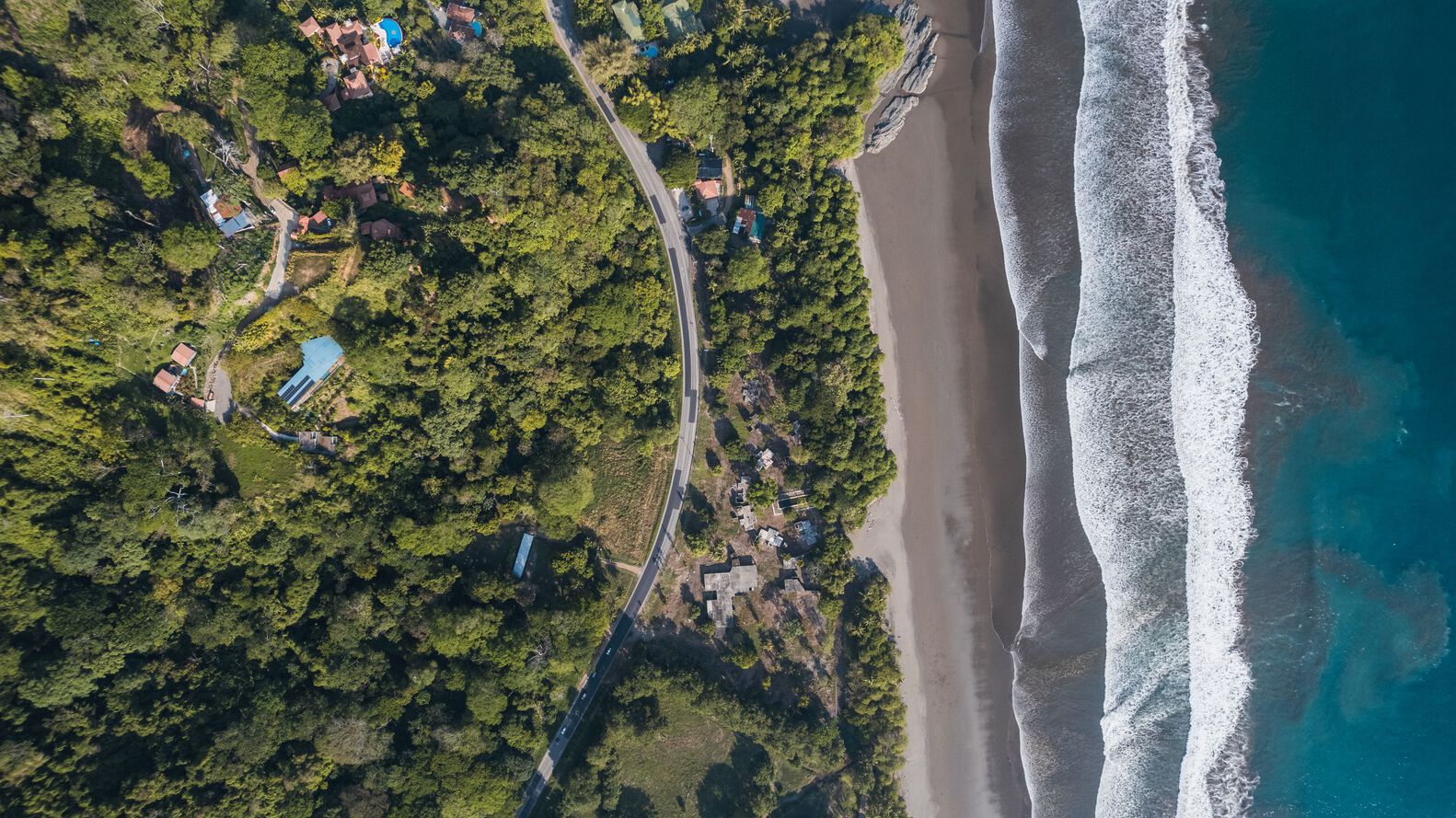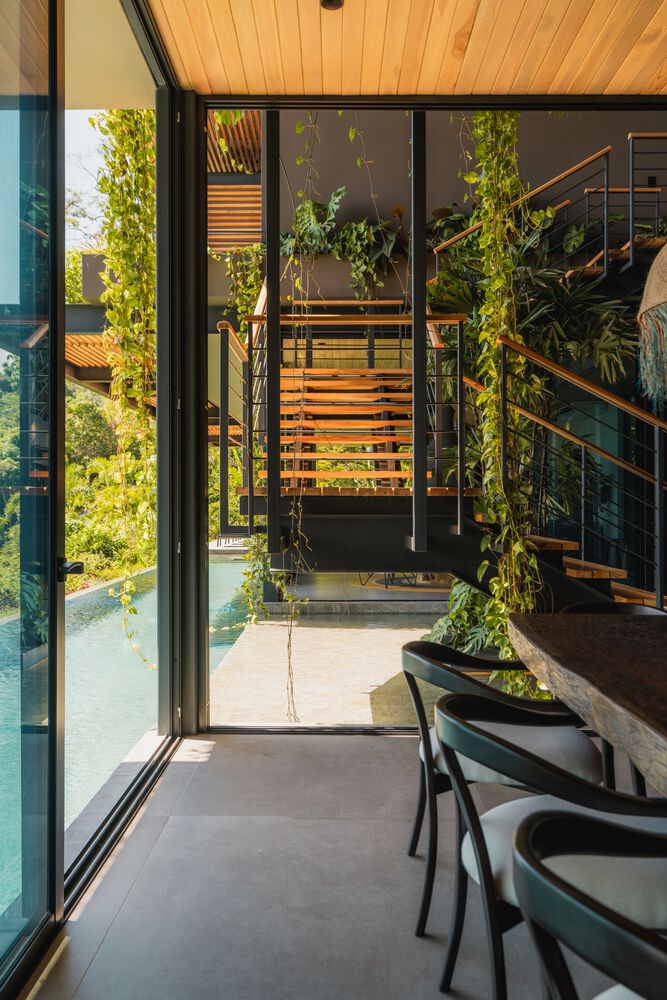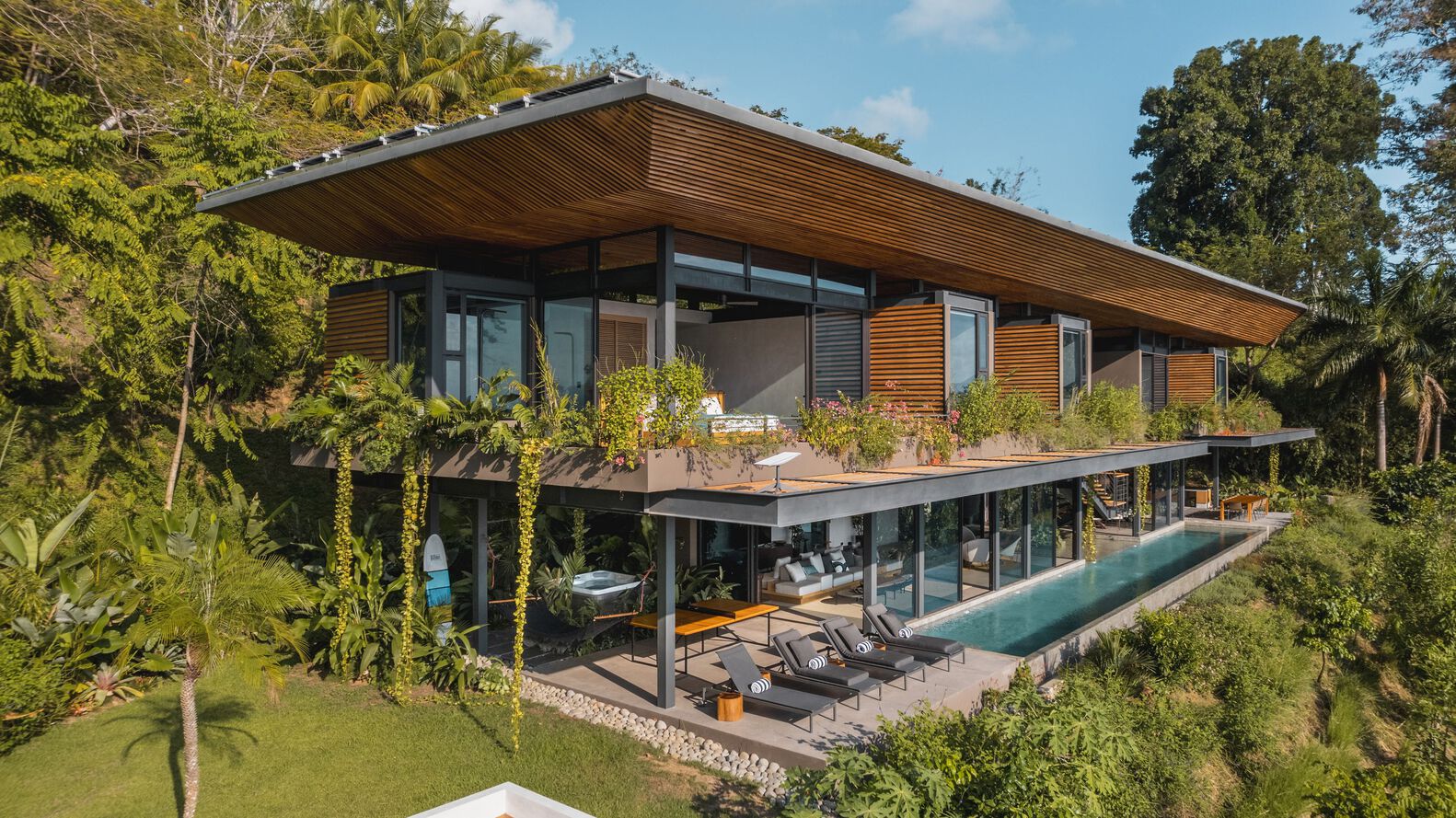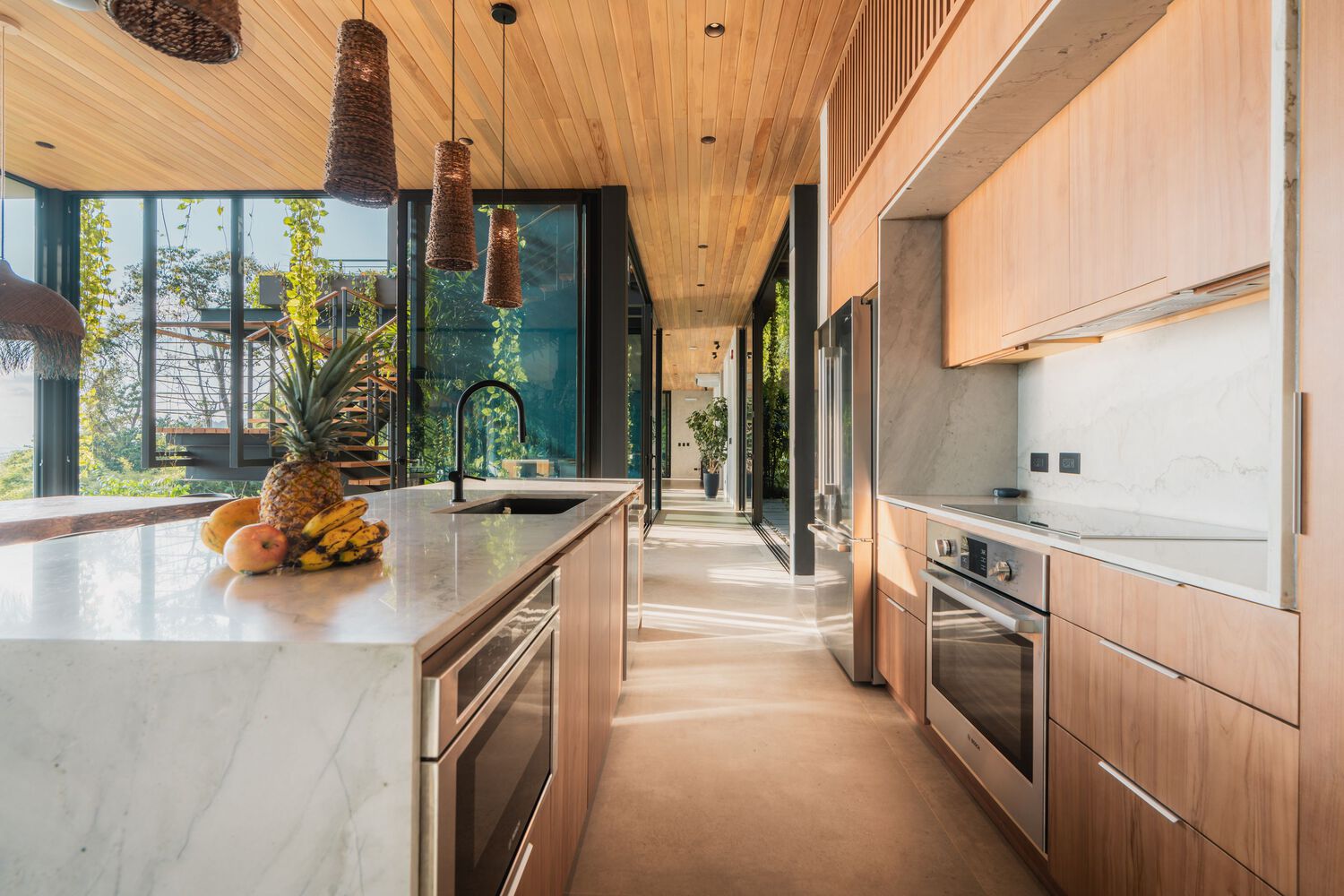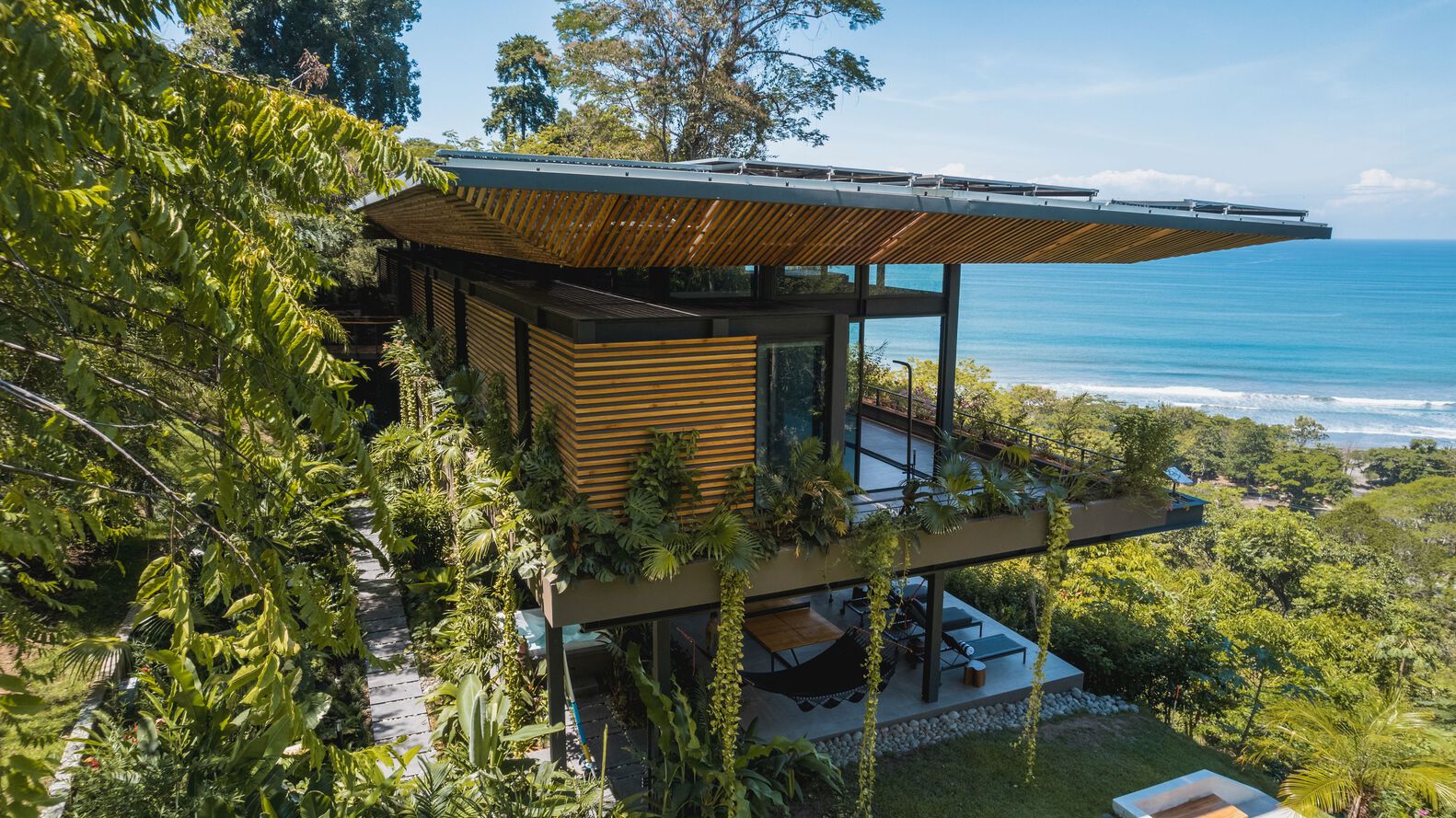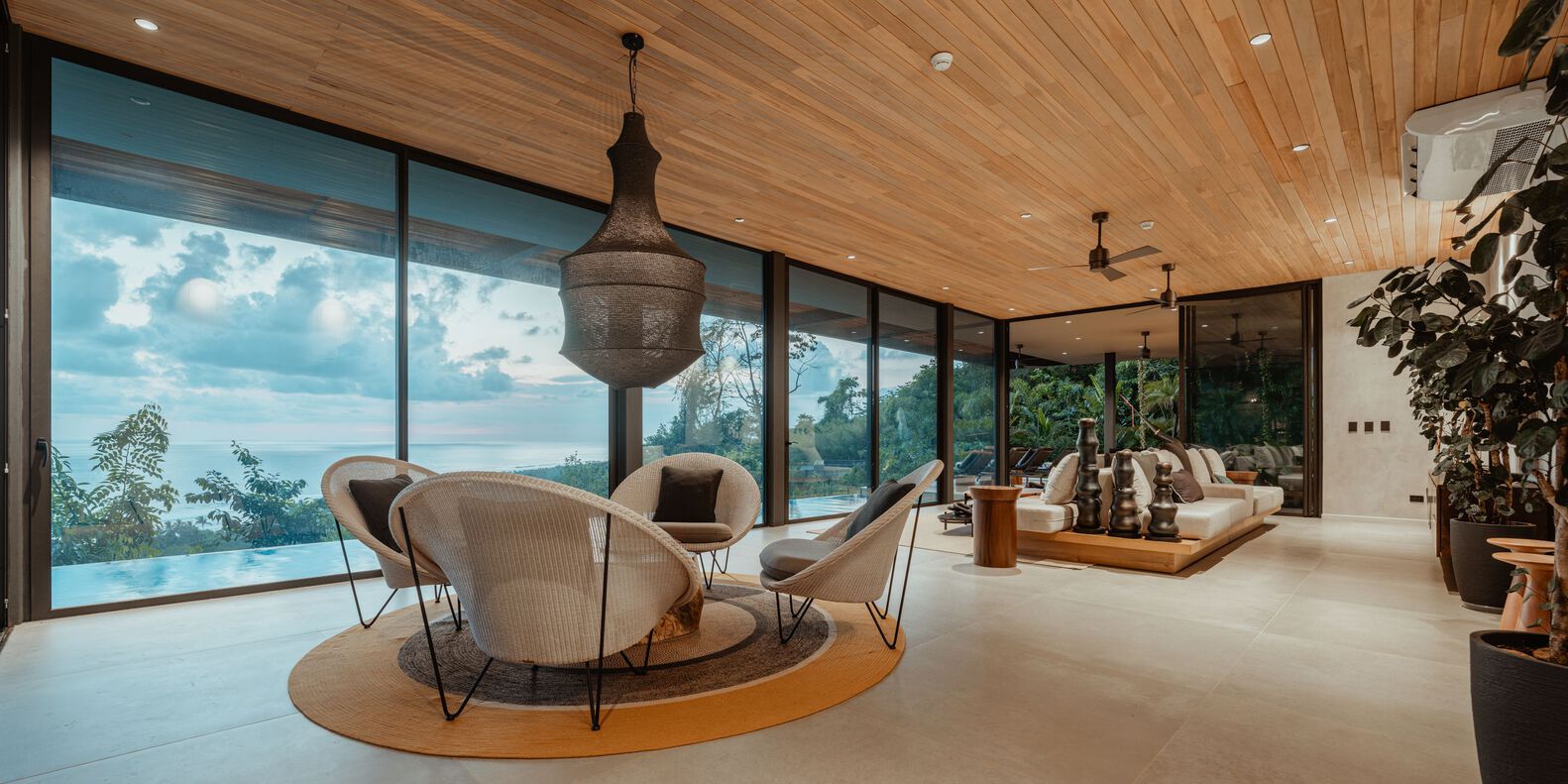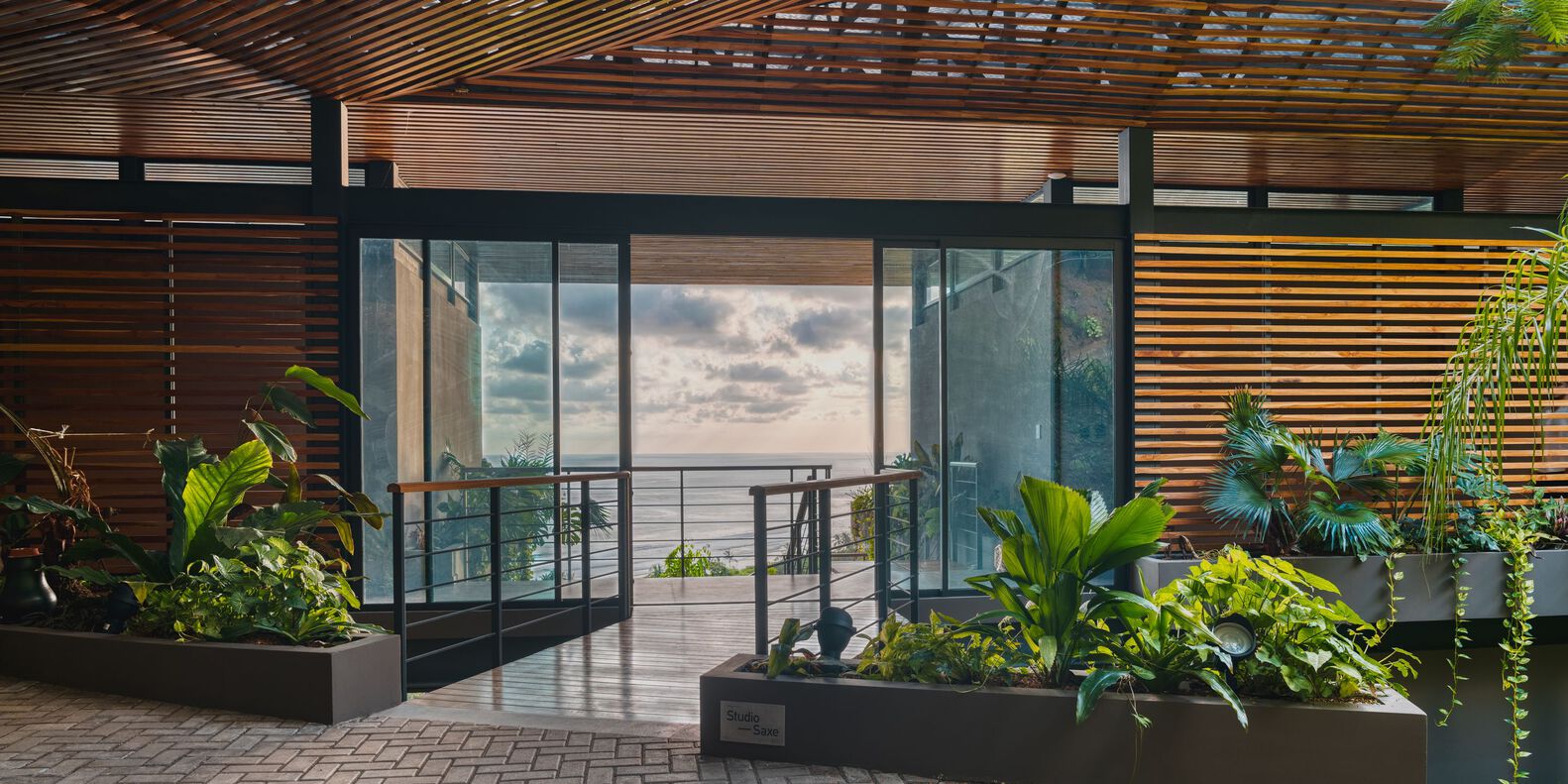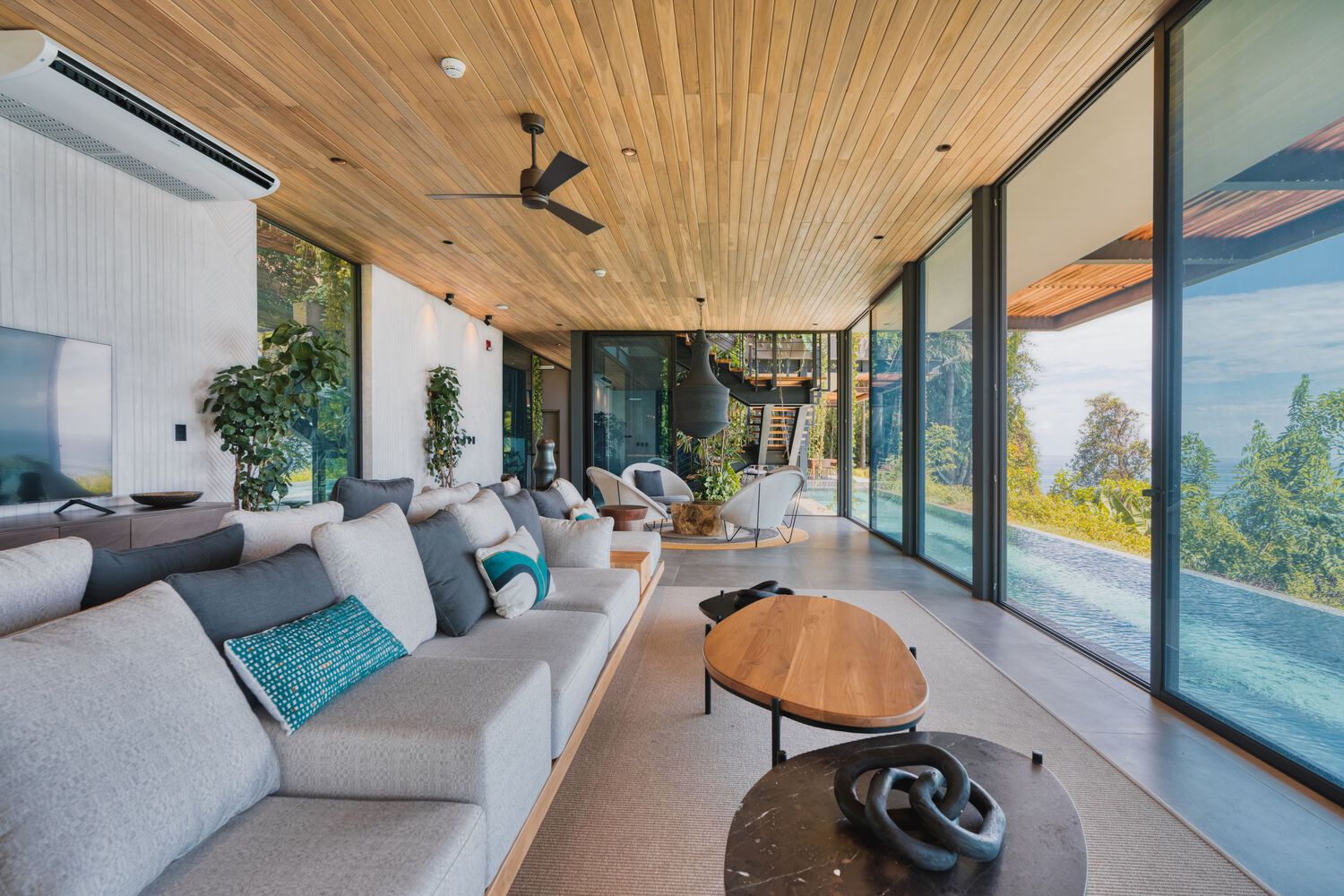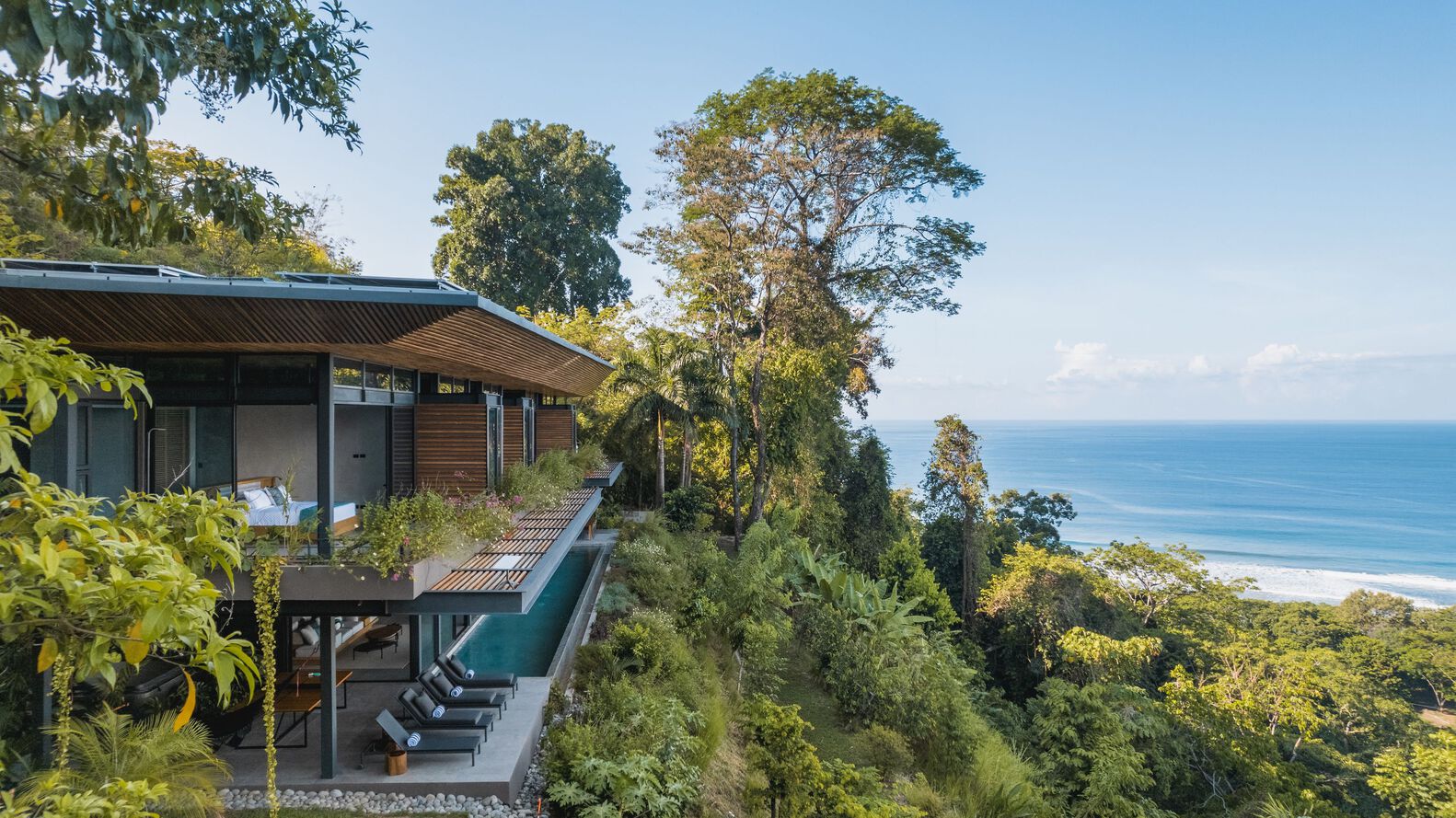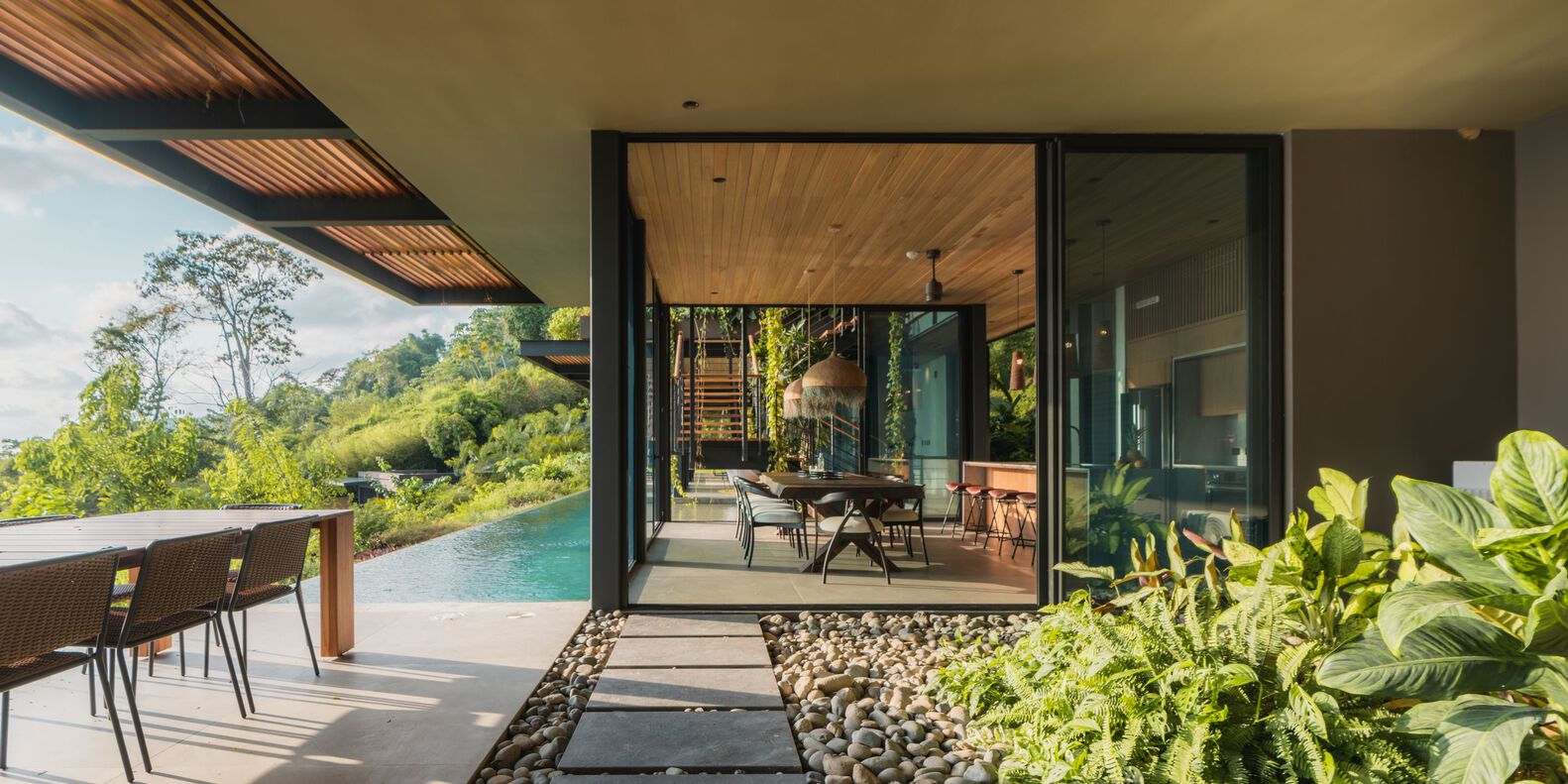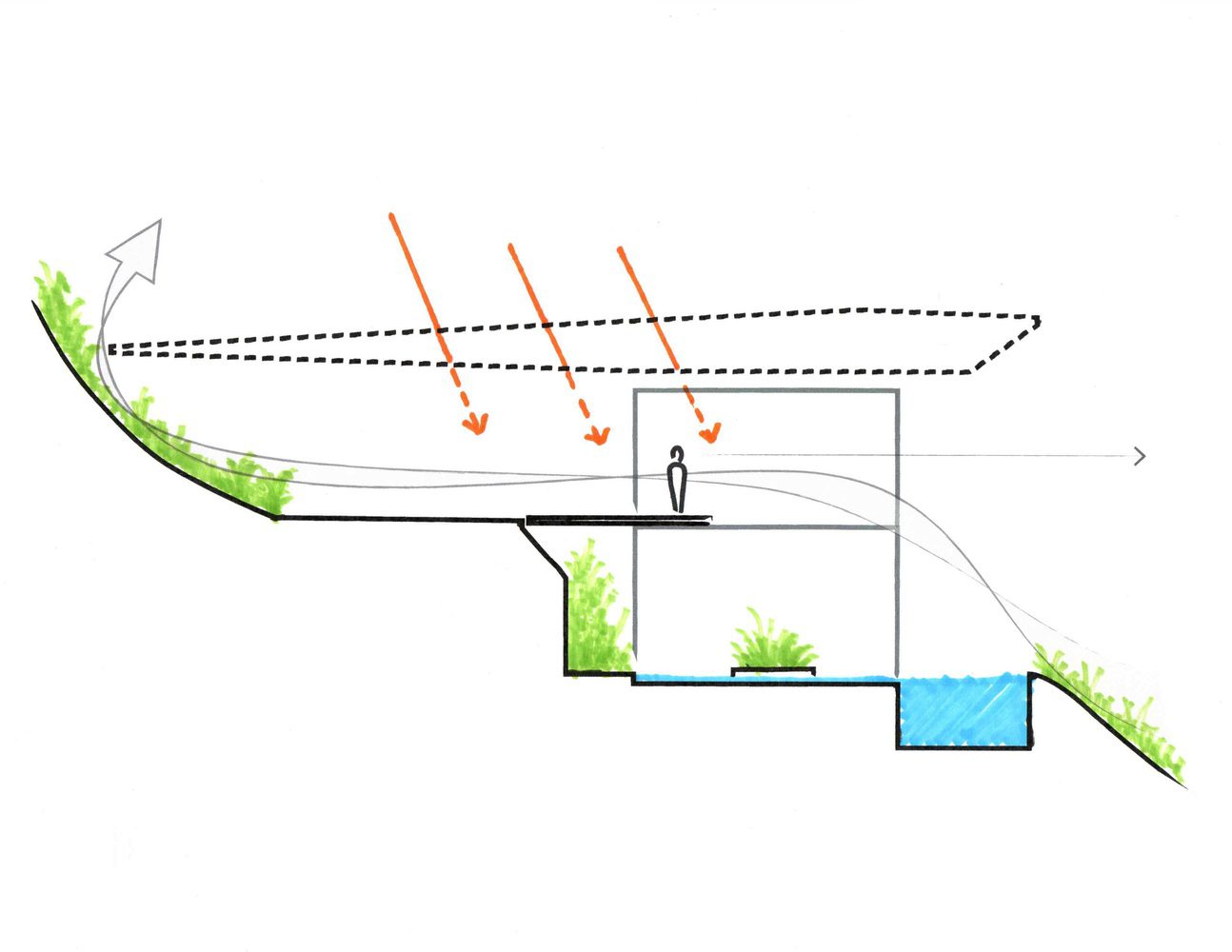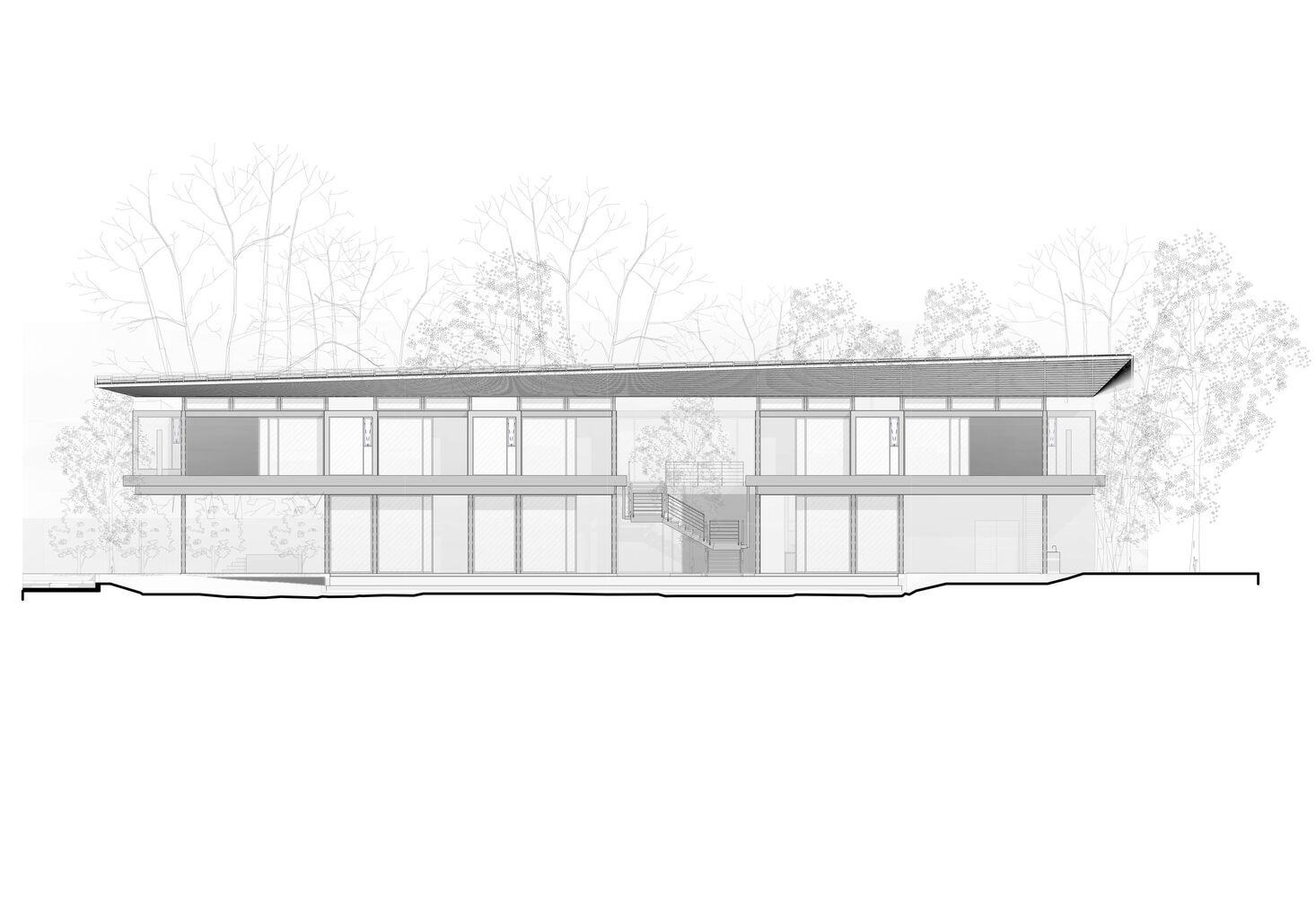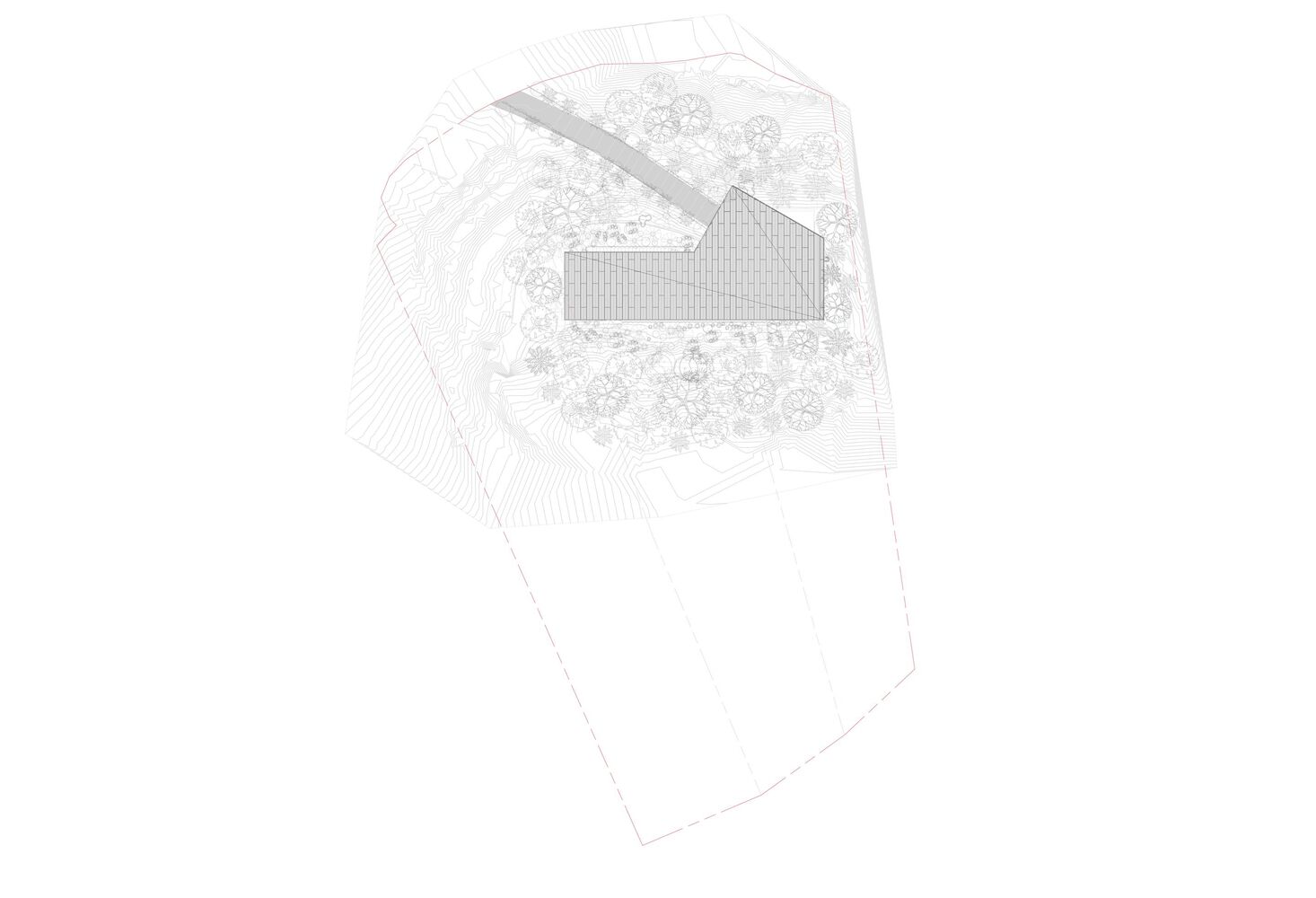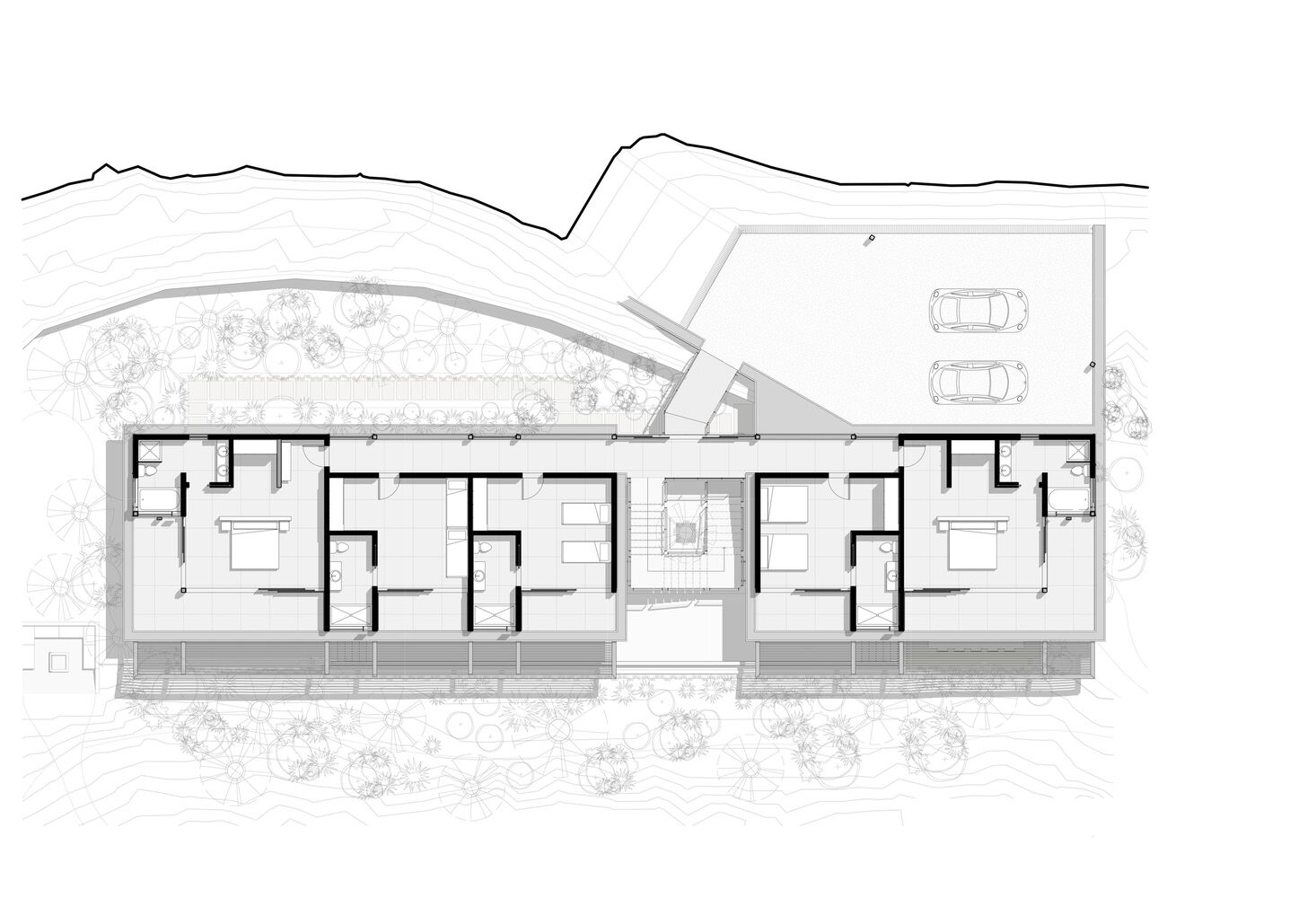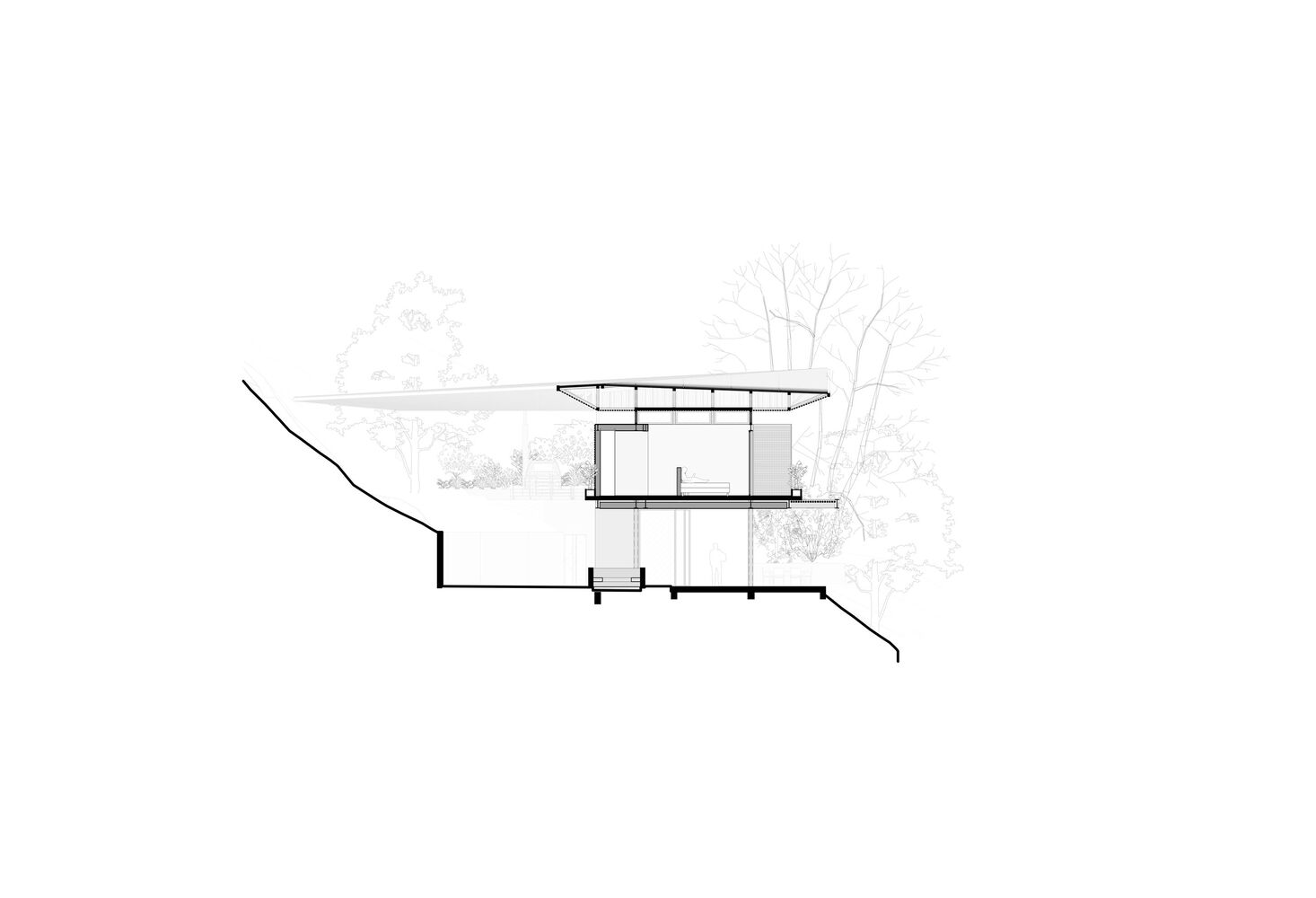Across from the town of Dominical, nestled into the lush mountainside, ‘Cascada de Luz’ gazes out over the surf lineup towards the distant horizon where whales annually rear their young. Sunrays filter through the roof canopy, casting a soft, dappled light over the spaces below. A refreshing breeze flows up through the home, carrying the scent of native flowers. As day turns to night, the ocean mirrors the stars above, and the waves rolling over the sand offer a soothing rhythm in which to fall asleep.
Cascada de Luz House’s Design Concept:
The home is designed to progressively highlight the wondrous ecological and topographical surroundings. As visitors arrive and descend the driveway, they are offered glimpses of the ocean through the trees, over the top of the house. The roof covering is composed of perforated panels, tinted blue to create a seamless visual transition with the ocean’s horizon. Dropping below a soaring overhang, visitors find themselves in a cool and protected arrival area. Here, soft light permeates through the perforated panels, translucent sheets, and an array of teak louvers, creating an ambiance reminiscent of a dense jungle.
A wooden bridge suspended over a bamboo grove leads to the second level with a framed view of the sunset. Bedrooms on this level, including master suites on each wing, have independent balconies, bathrooms, and outdoor showers. The two levels are connected by an open staircase in a central atrium, suspended over a shallow extension of the pool. The social lounge and terrace below are enveloped by jungle on three sides and open to a 24-meter infinity lap pool balanced over a steep incline on the other.
This pool connects indoor and outdoor spaces such as the garden, jacuzzi, firepit, dining room, living room, breakfast terrace, and barbecue area, encouraging circulation through the water as easily as on foot. In the evenings, the roof activates in reverse, allowing discrete light from within to pass through the perforated surface, creating an effect like moonlight reflecting off waves.
A variety of passive bioclimatic principles ensure comfort throughout the home. Large overhangs protect against the hottest times of the day, and non-enclosed circulation and large openings mean less of the home needs conditioning. Elevated windows within the bedrooms provide cross-ventilation, significantly reducing the need for mechanical air conditioning. Materials were selected based on their carbon footprint, with all timber certified as coming from responsibly managed sources.
Saxe’s Landscape department in collaboration with the architecture team aimed to revive the original environment. The architectural design was developed in tandem with the landscape so that both could influence each other. Vegetation was integrated into all spaces, not just around the periphery. Planter boxes surrounding the second level host a cascade of vines down the sides of the house converging in the central atrium, bringing greenery to the heart of the structure.
The gardens and surrounding terraces are filled with a variety of endemic plants that help regenerate the soil. Trees provide fruit for animals like macaws and bats, which are a natural pest control, while flowers attract hummingbirds, butterflies, and bees. This creates a lively and interactive environment that synchronizes with the ecological backdrop. Pathways and stepping-stone trails around the property invite visitors to explore these wonders and engage with the splendid biodiversity that Costa Rica has to offer.
Building on a steep slope presented complications but also offered the opportunity to create a more integrated experience. The long pool doubles as an enormous retaining element, anchoring the house against the mountainside. A major challenge was hiding the sizable water tanks necessary for getting through the dry season without disrupting the terrain. The solution was to prop them against the backside of the building pad, using that as a base for the carport on the second level.
The roof was the most structurally acrobatic aspect of the design. It needed to appear to float lightly above the mass of the house while withstanding hurricane-force winds and supporting the combined weight of the solar panels and water loads. This was accomplished by creating a series of slender truss profiles that act together to distribute the weight evenly down narrow columns. The space between the trusses provided a convenient cavity for running electrical and mechanical systems, ensuring permanent accessibility for maintenance.
Project Info:
-
Architects: Studio Saxe
- Country: Bahía Ballena, Costa Rica
- Area: 705 m²
- Year: 2023
-
Photographs: Alvaro Fonseca


